
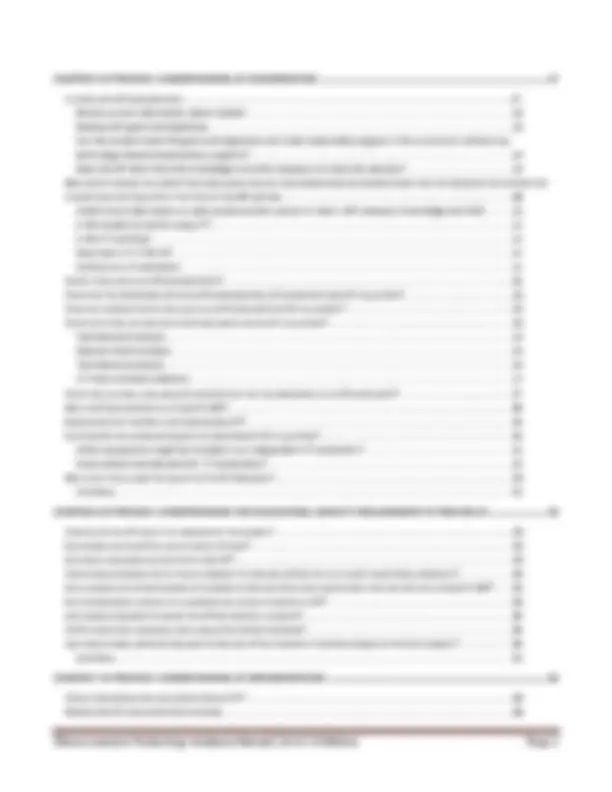
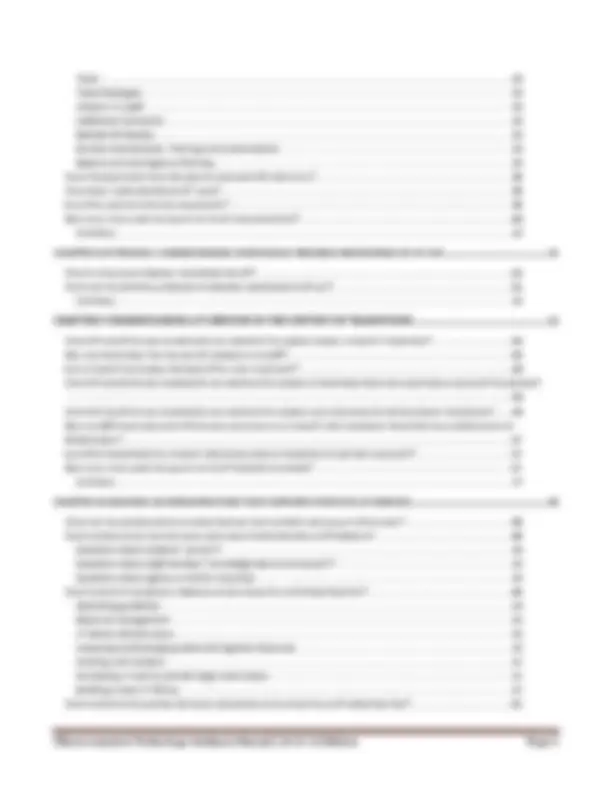
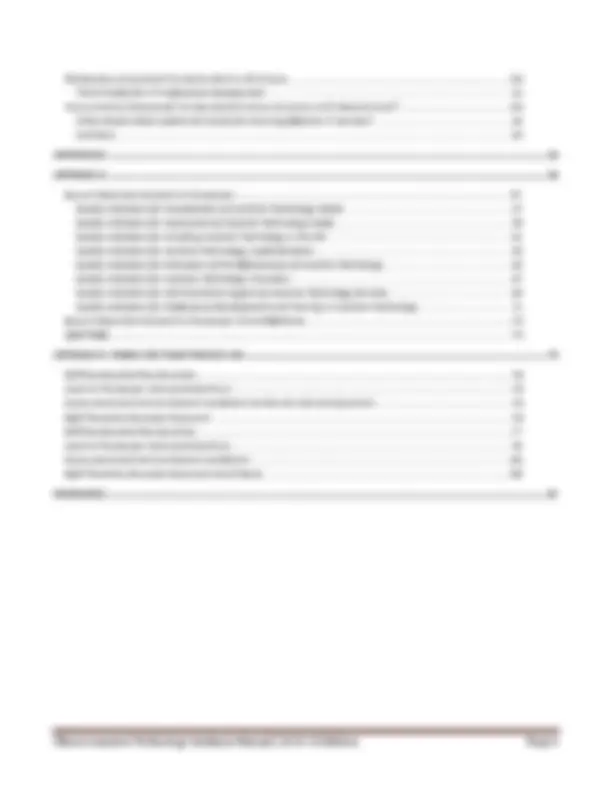
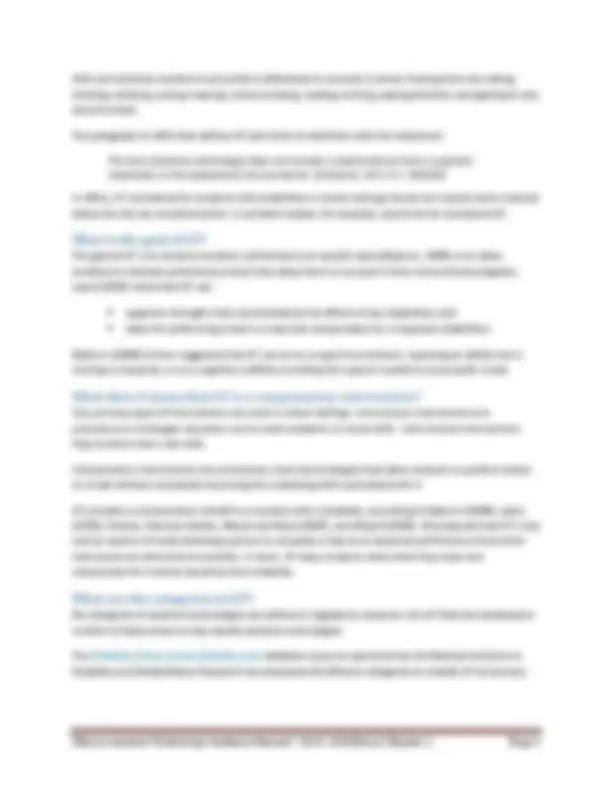
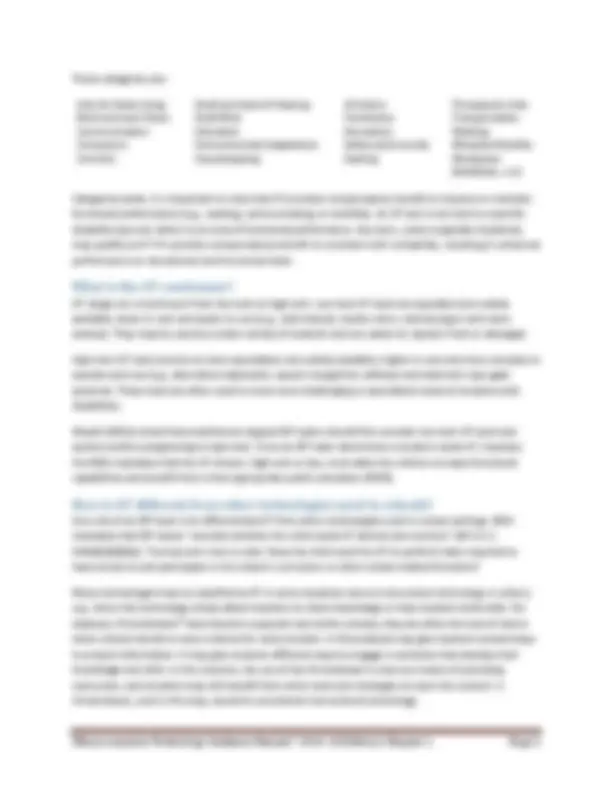
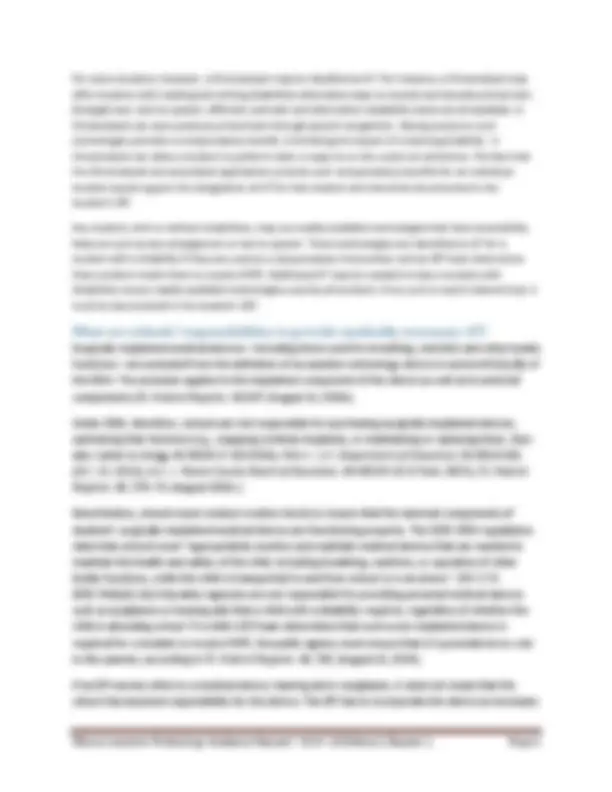
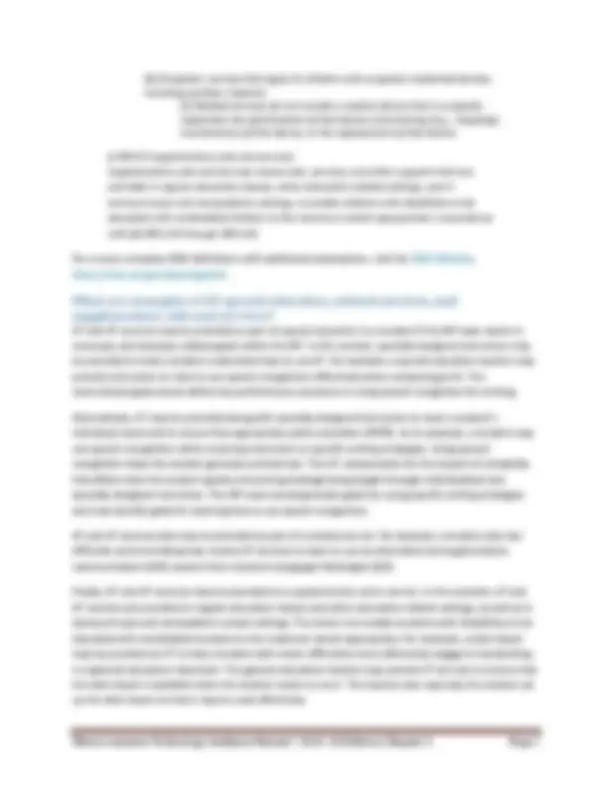
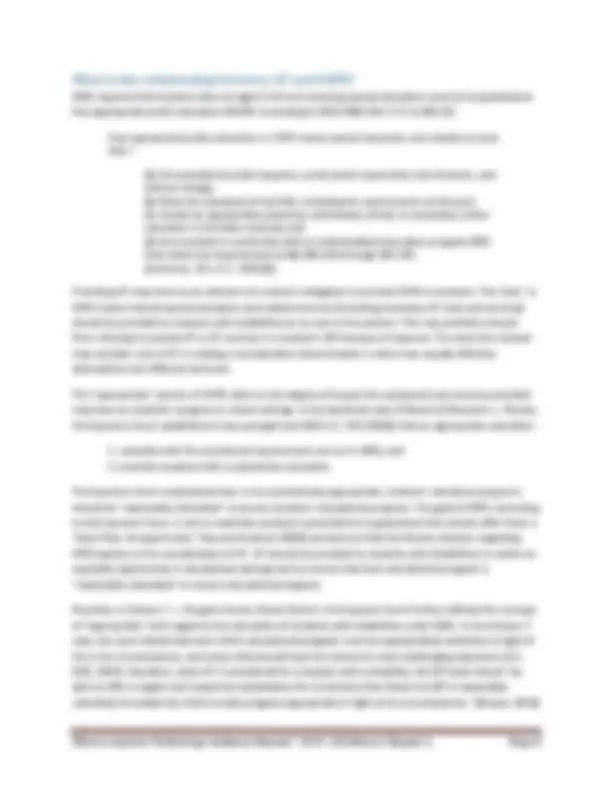
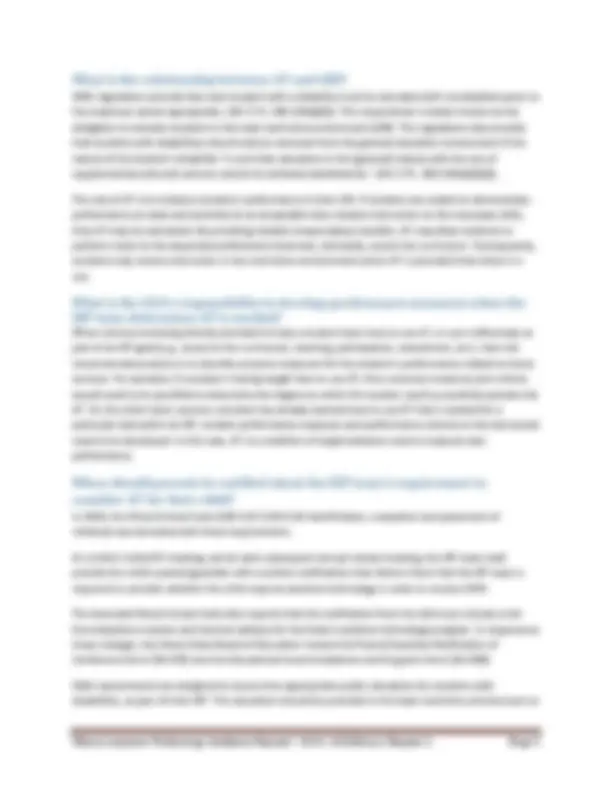
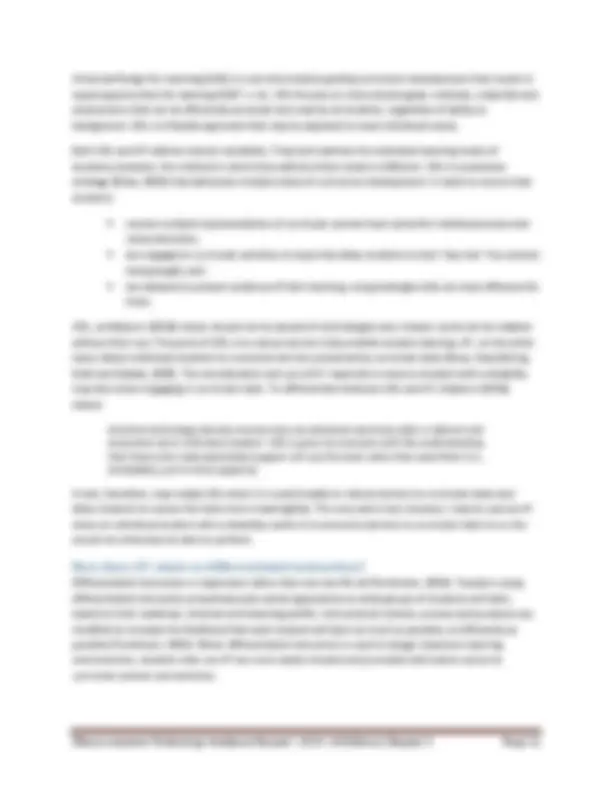


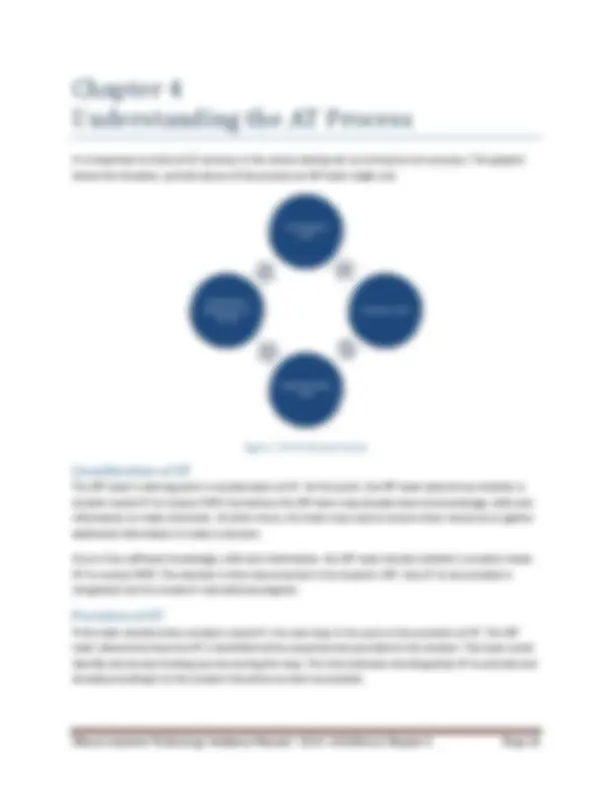

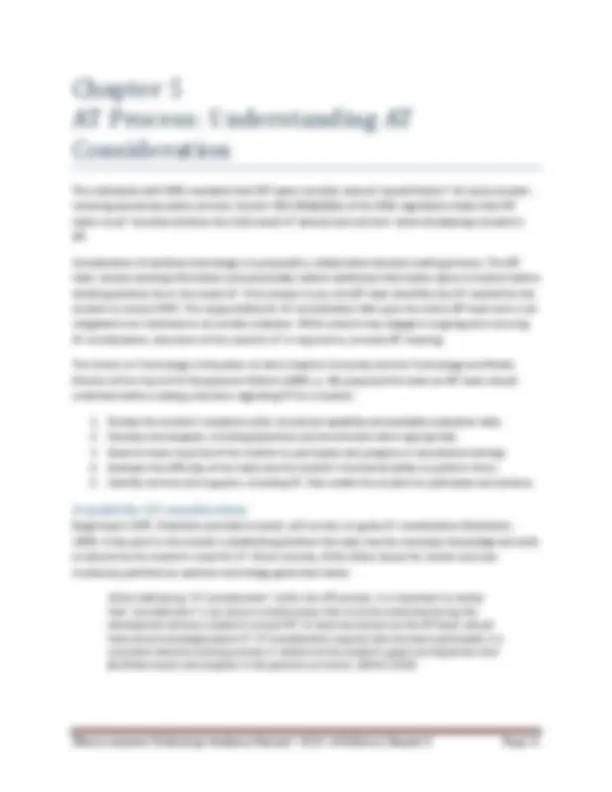
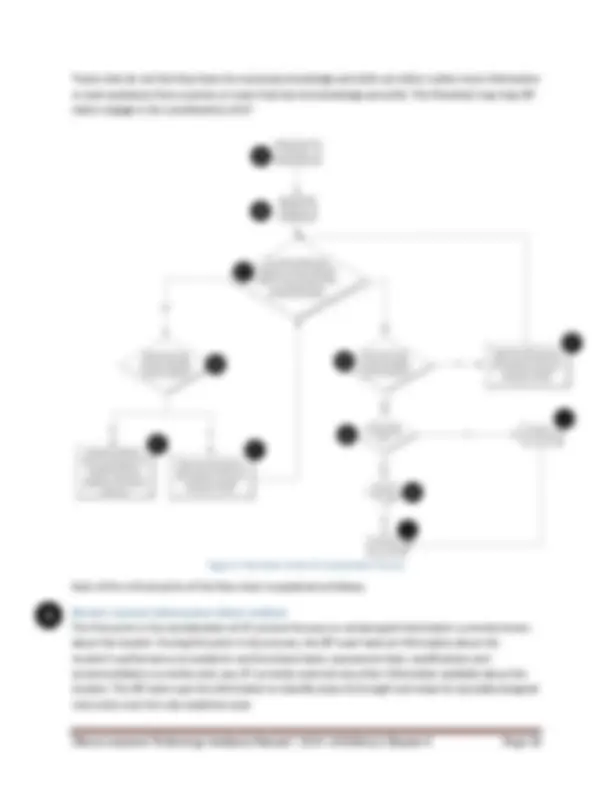



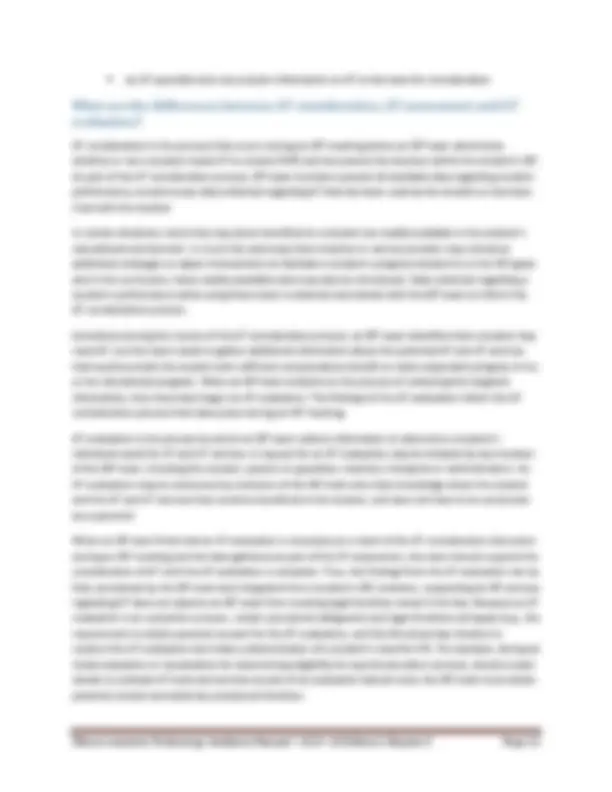
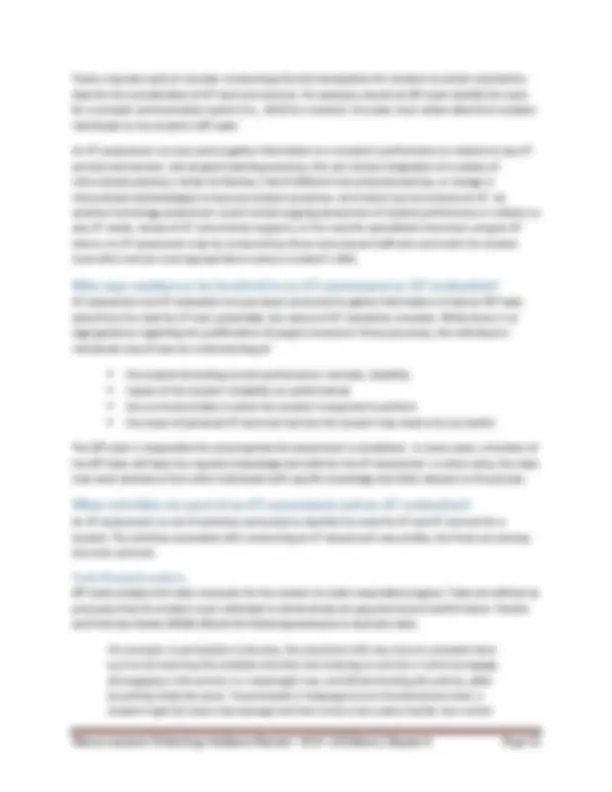
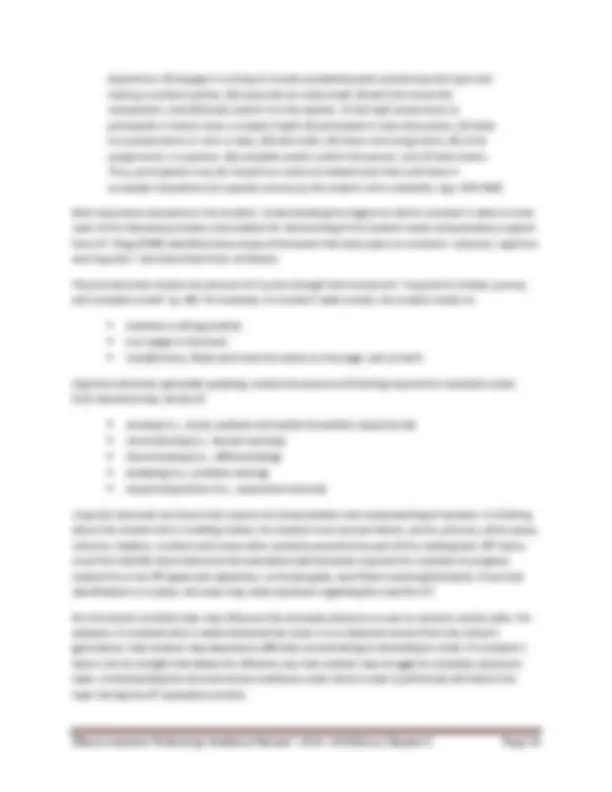

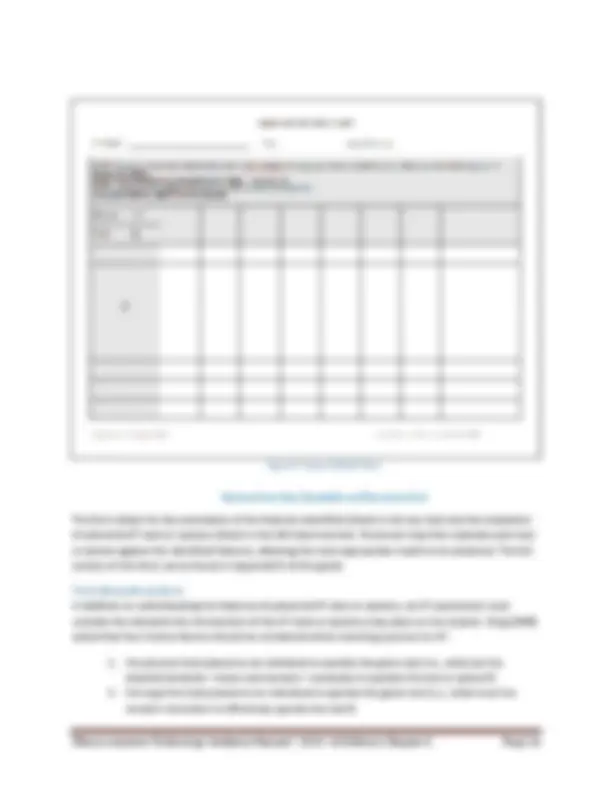
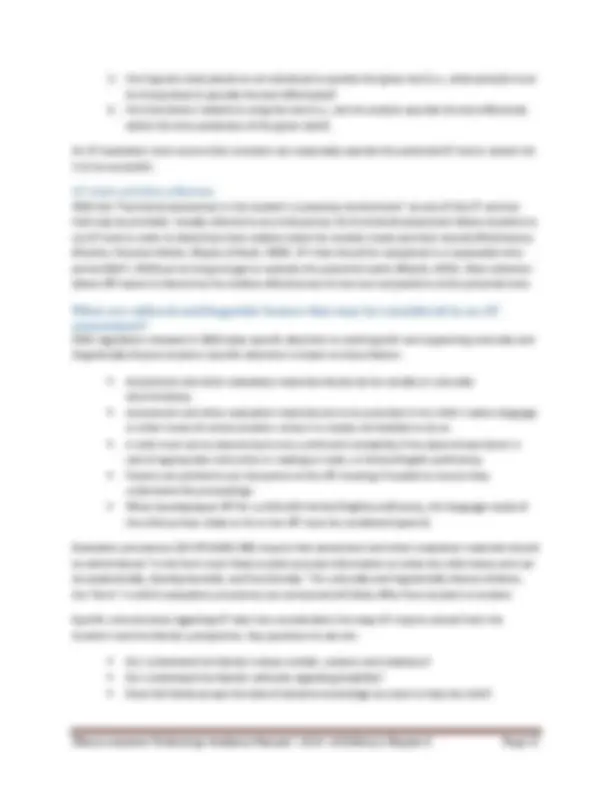
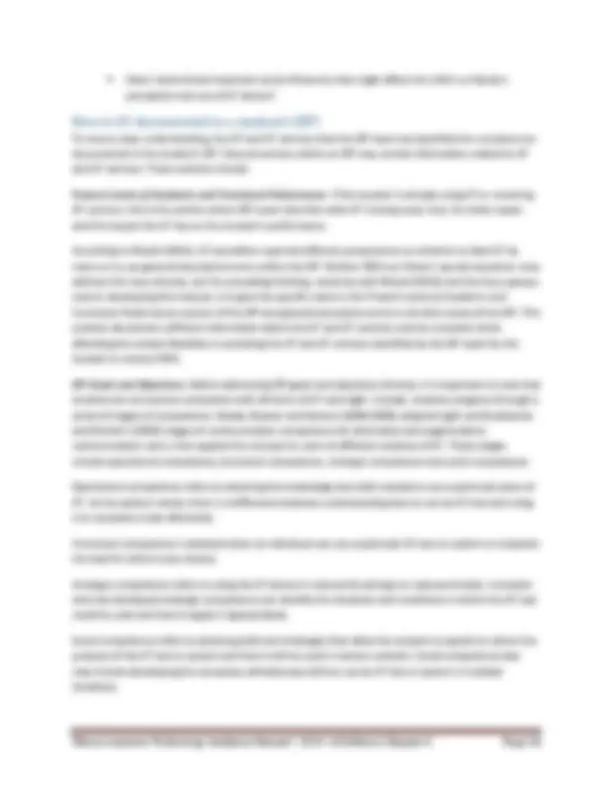
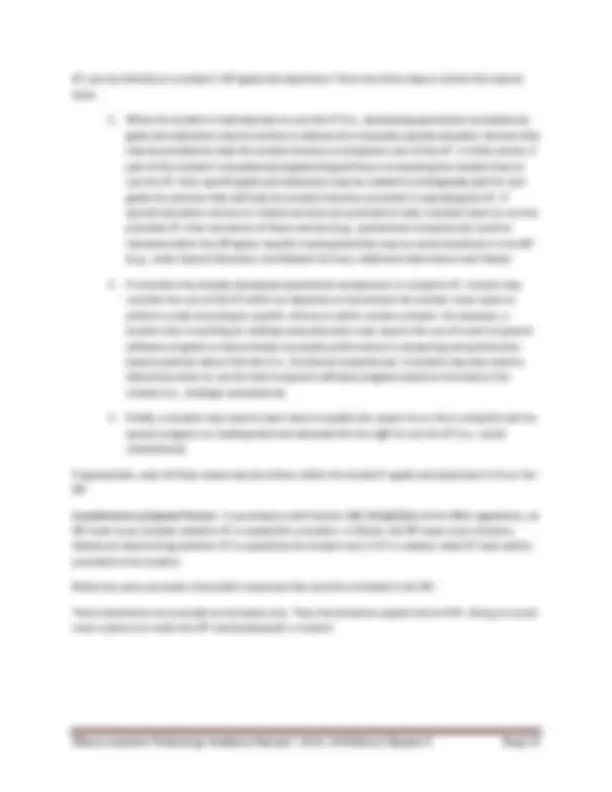
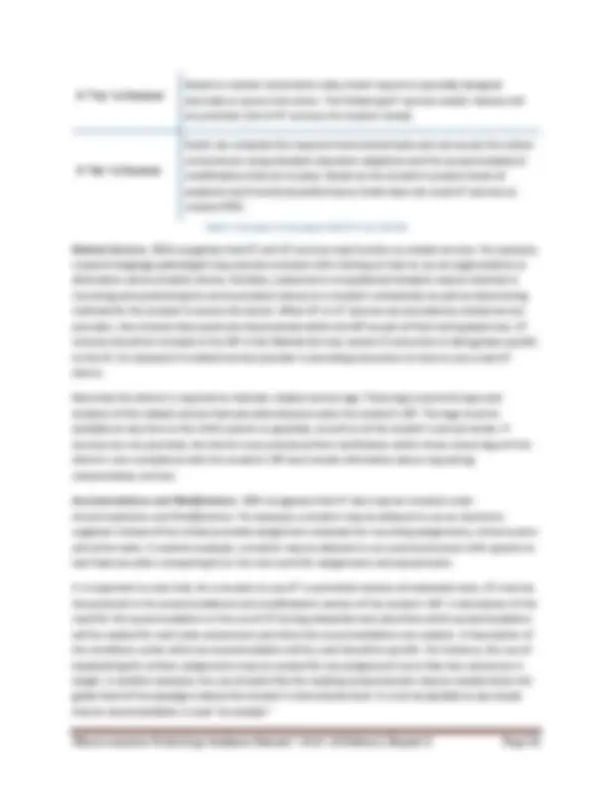
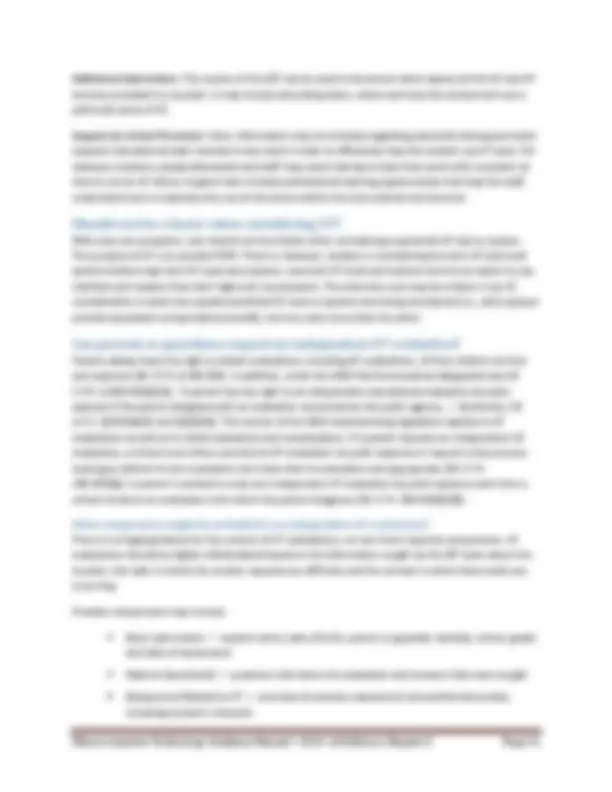
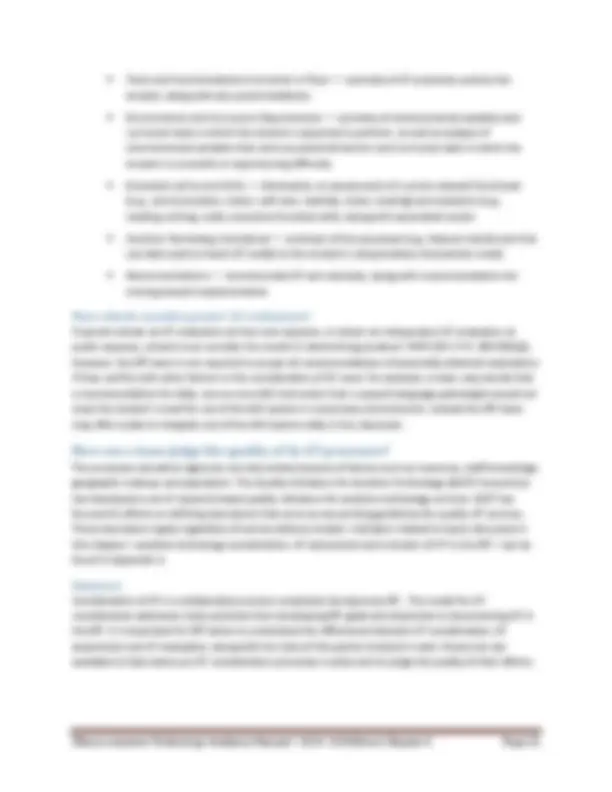
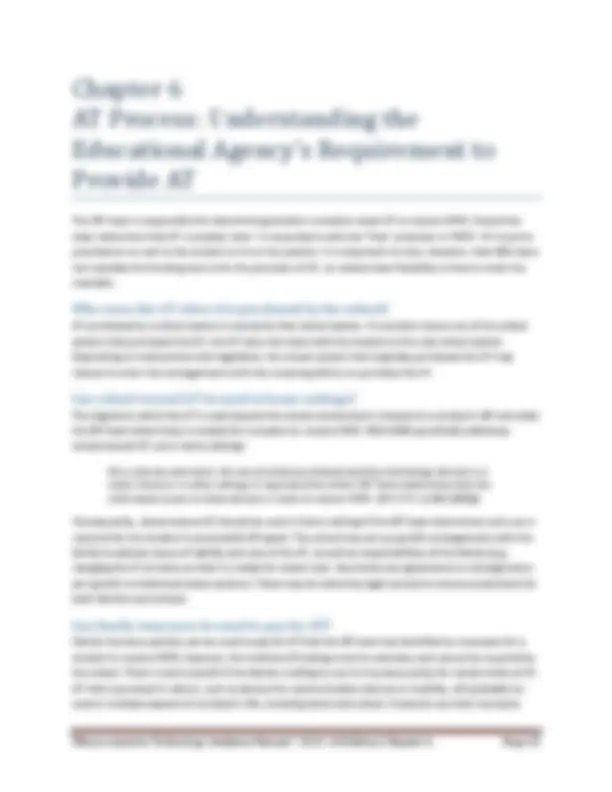

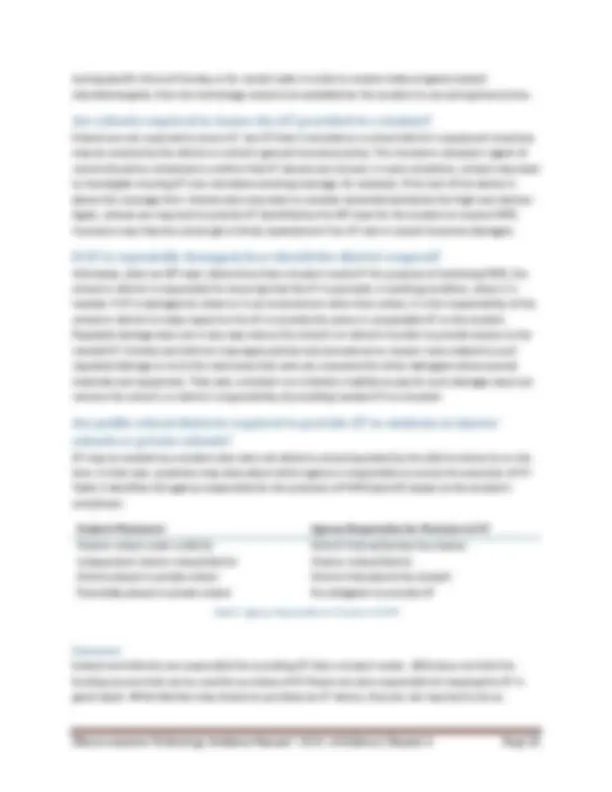

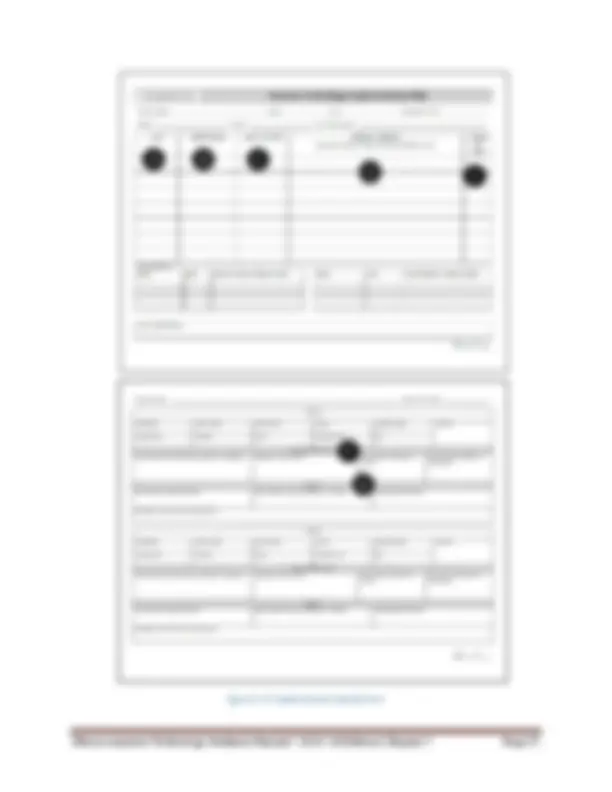

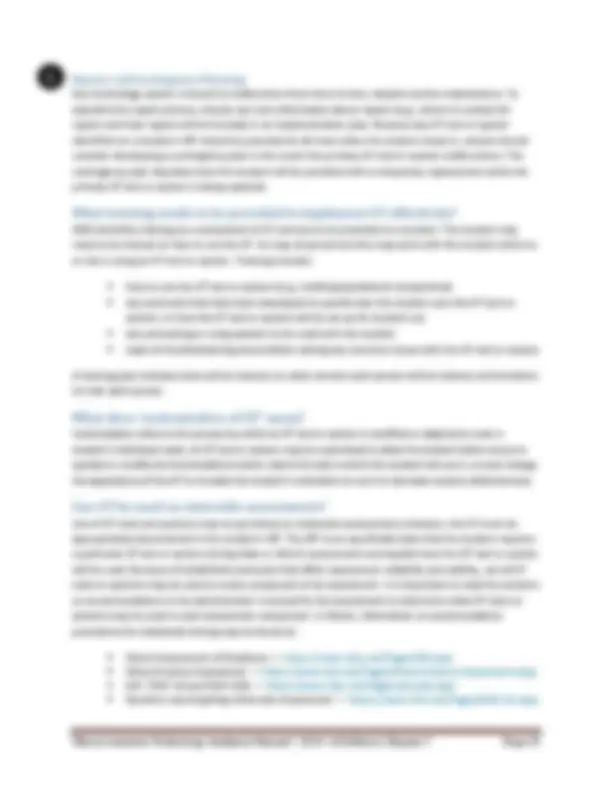
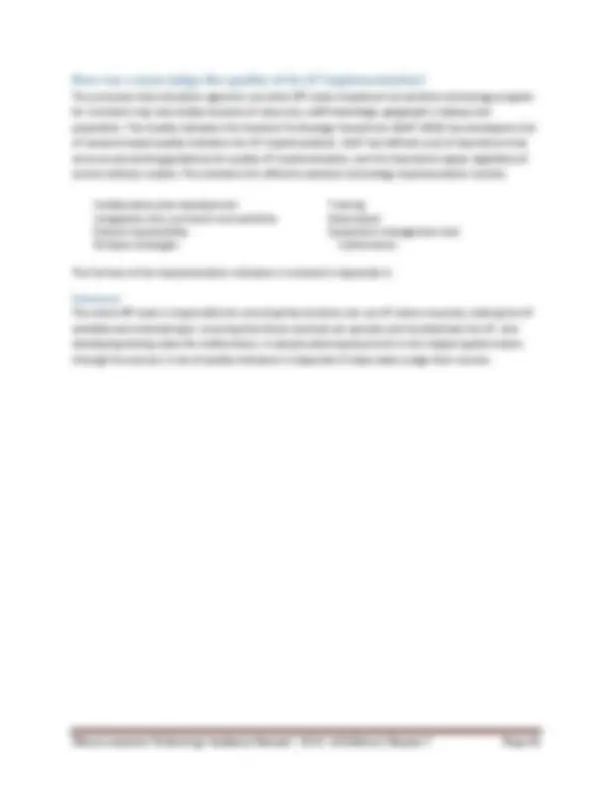
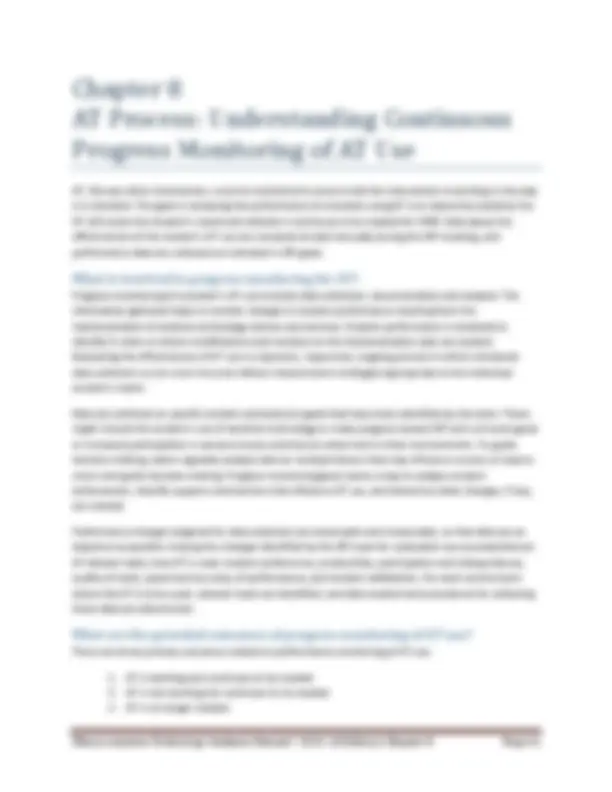
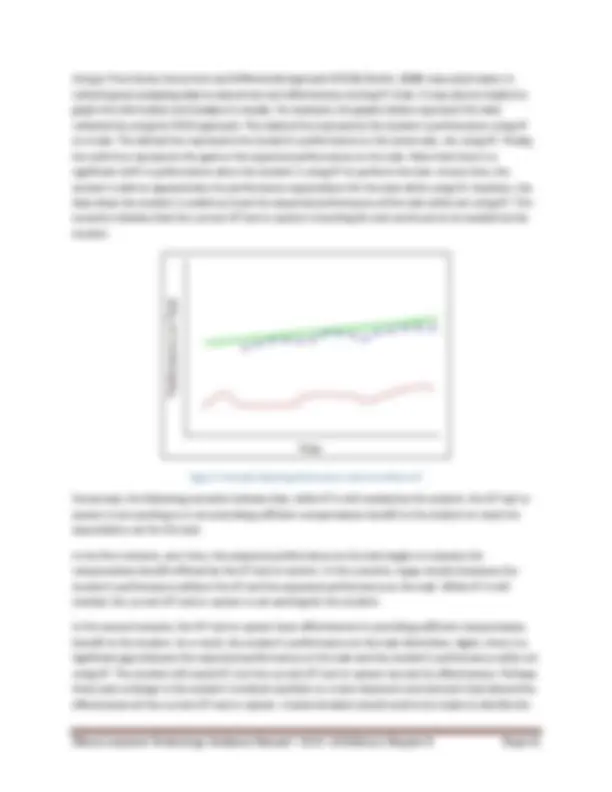
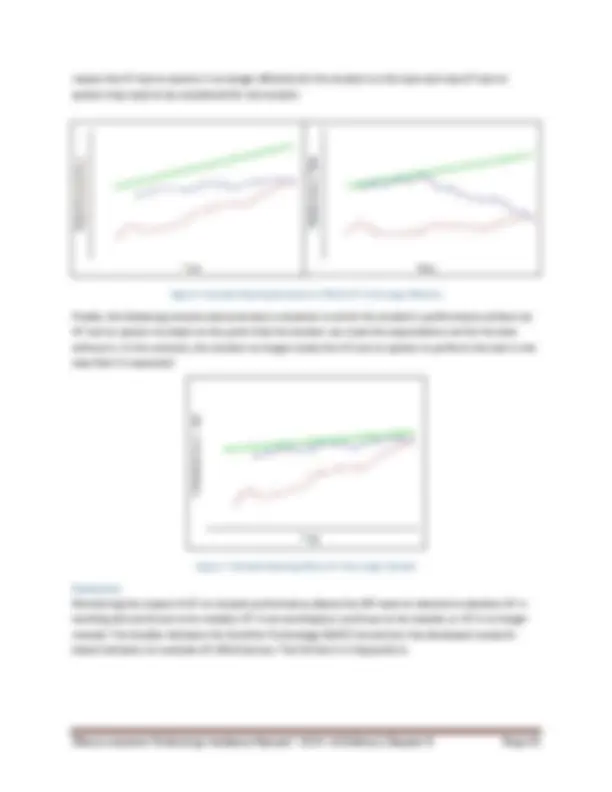
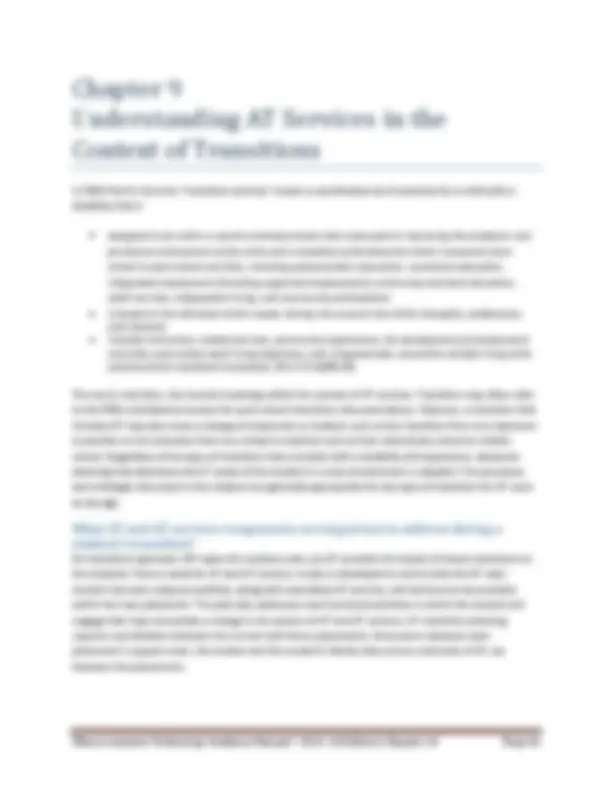
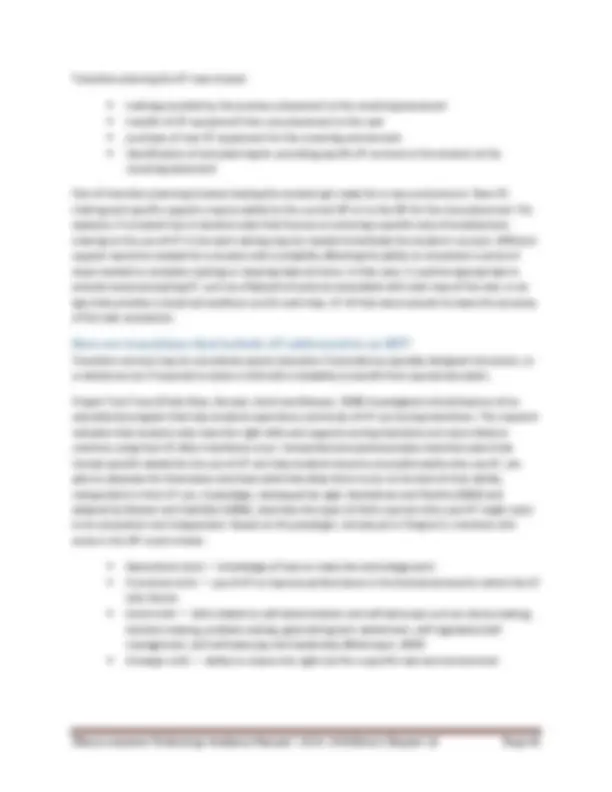
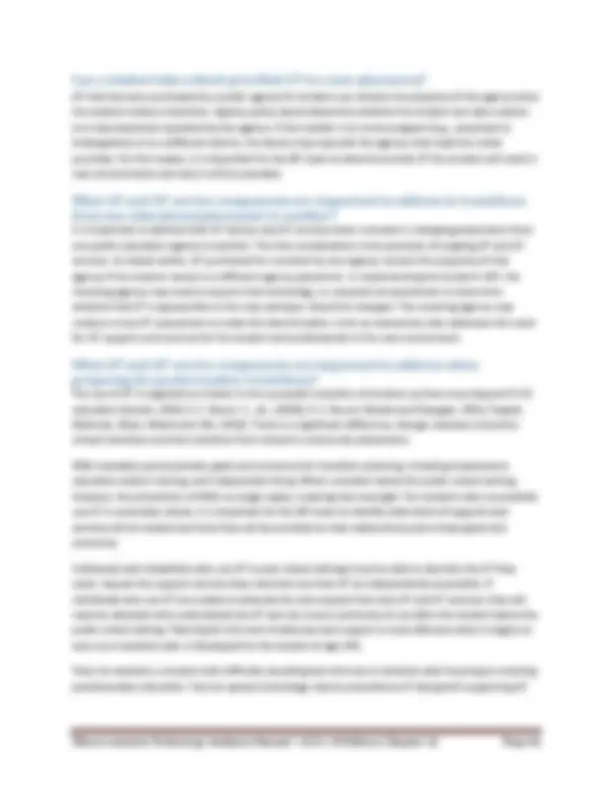
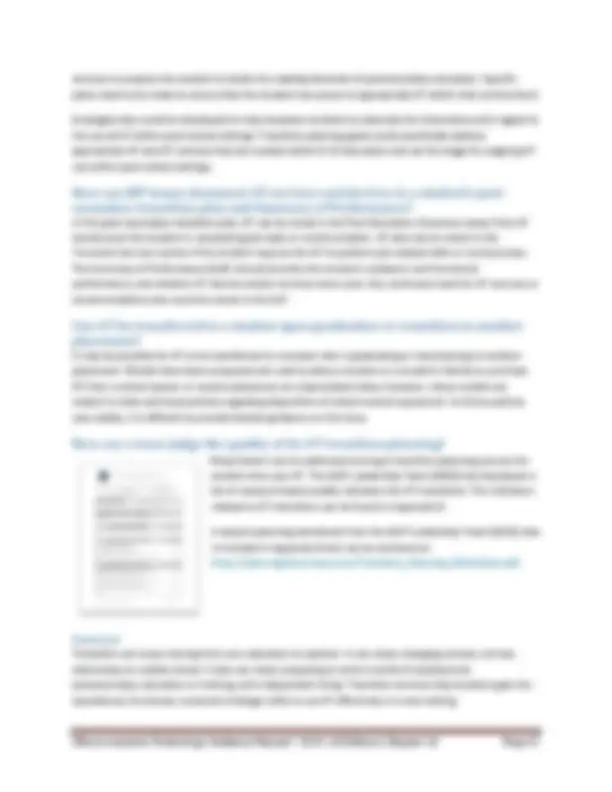
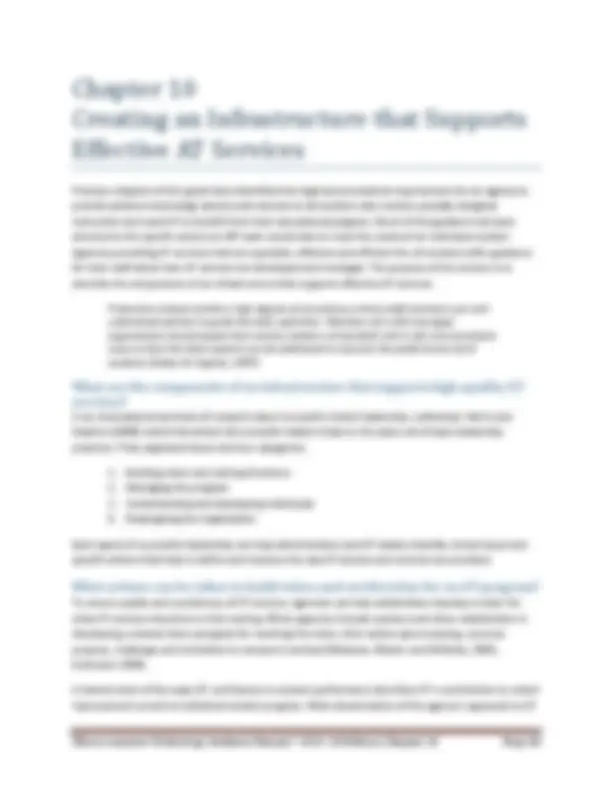
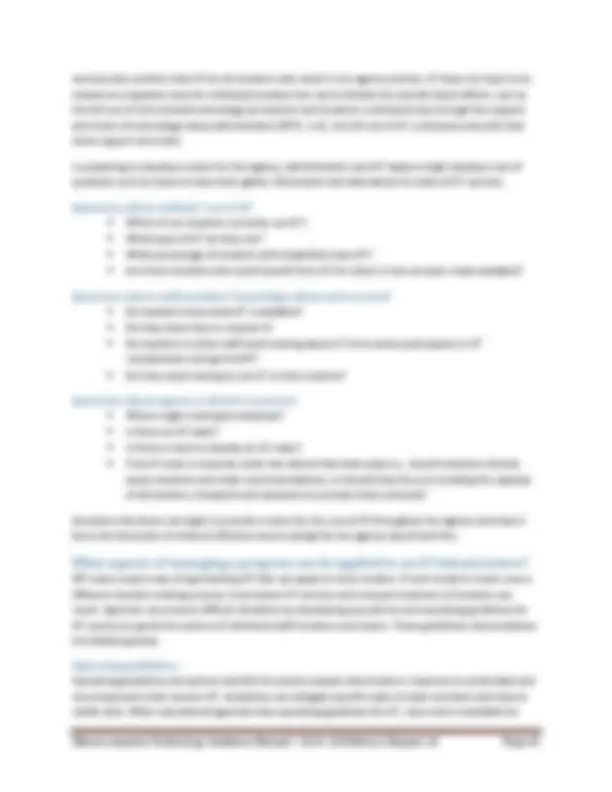
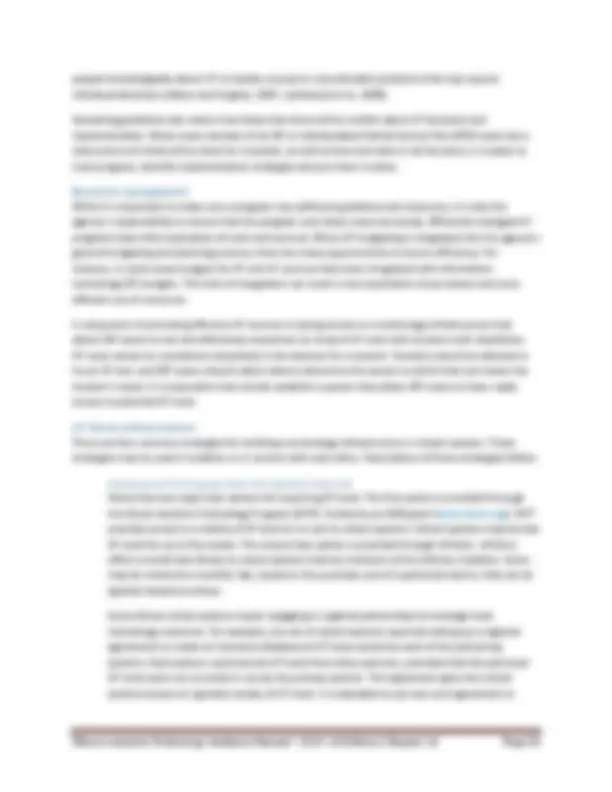
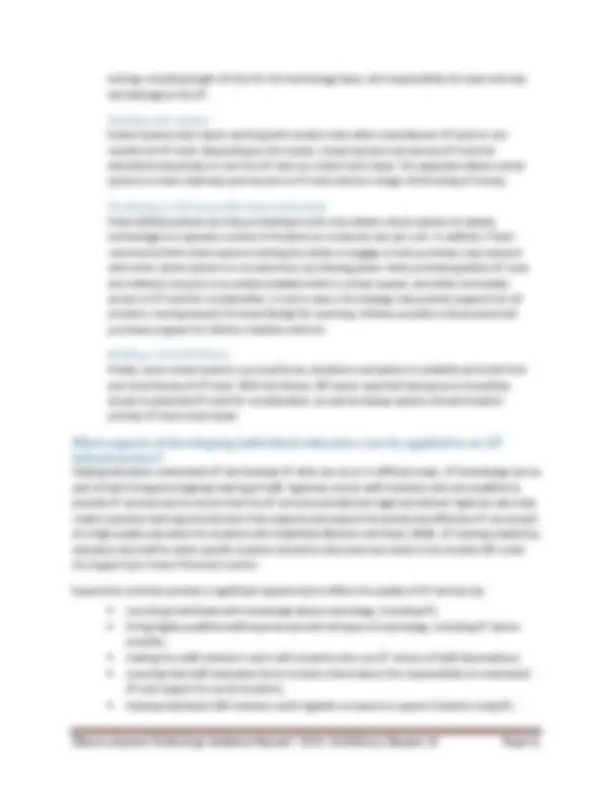
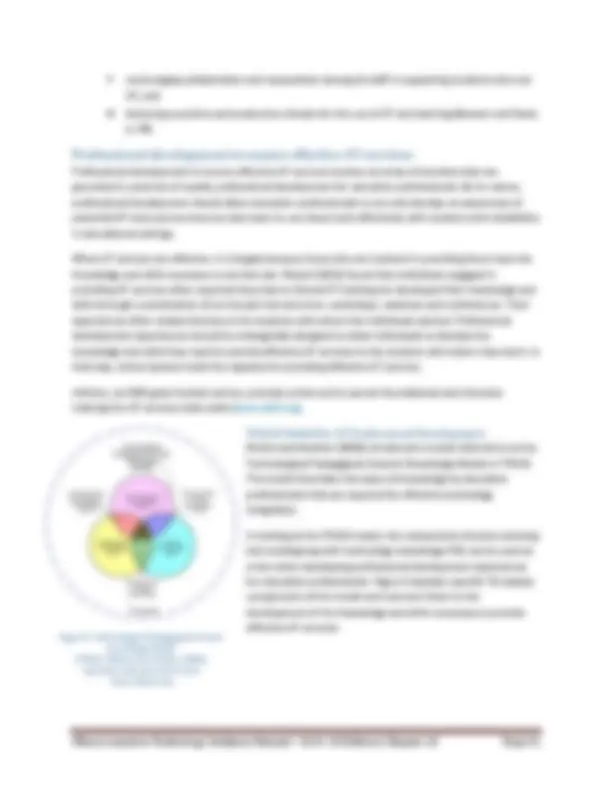
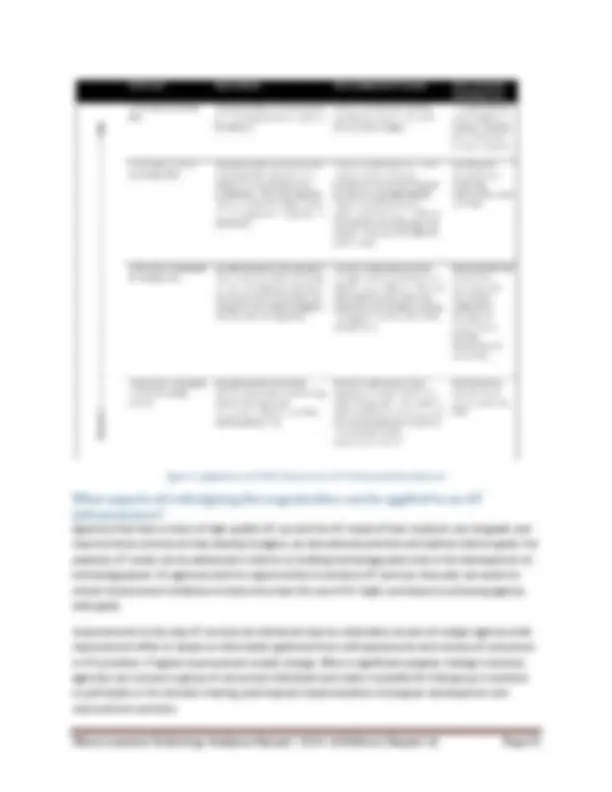
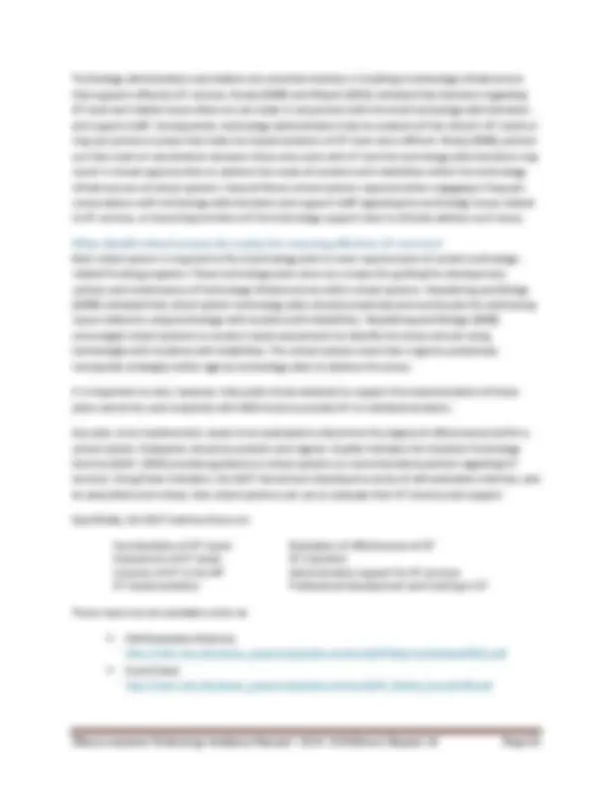

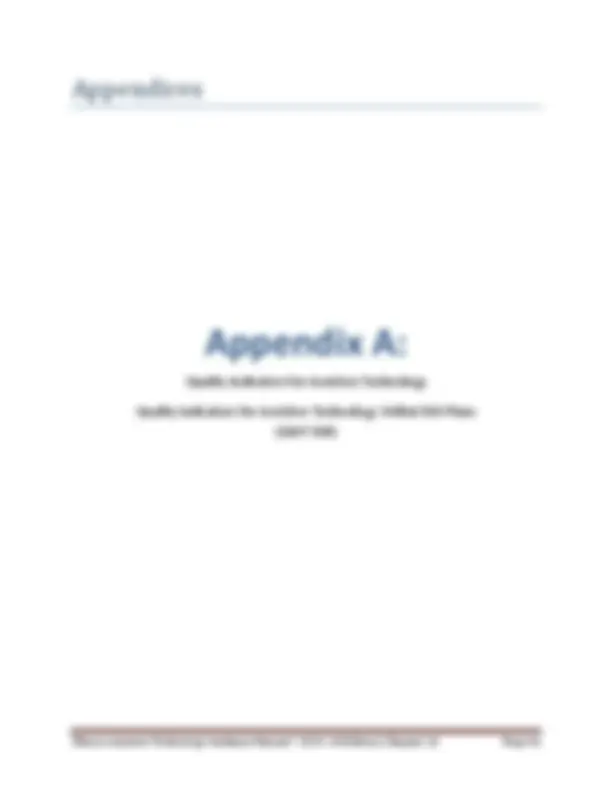
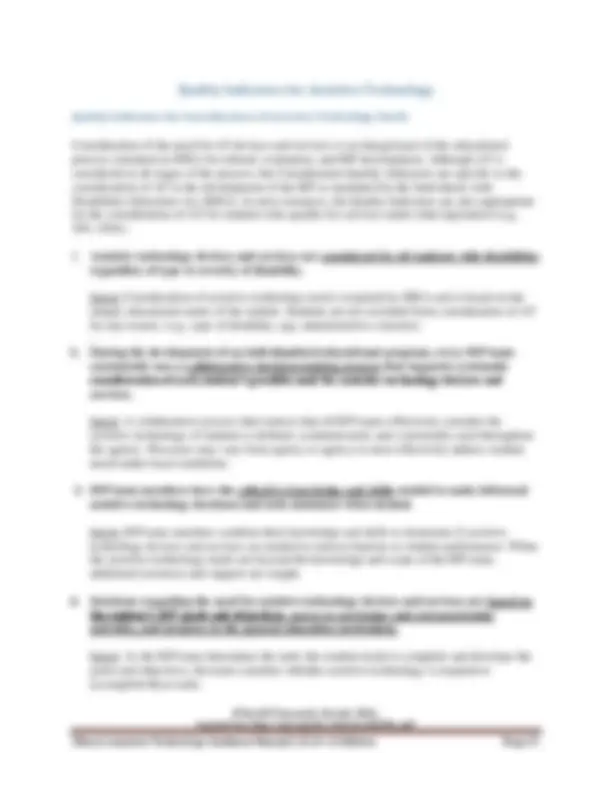
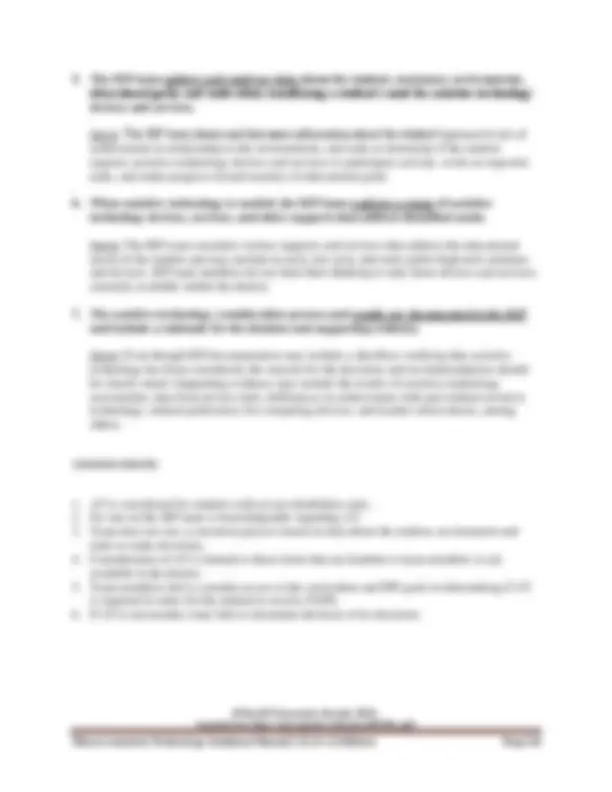
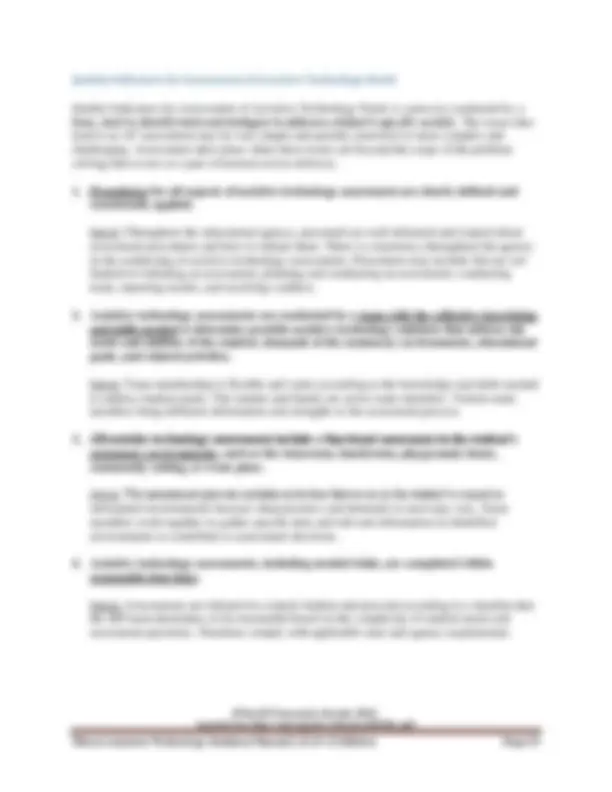
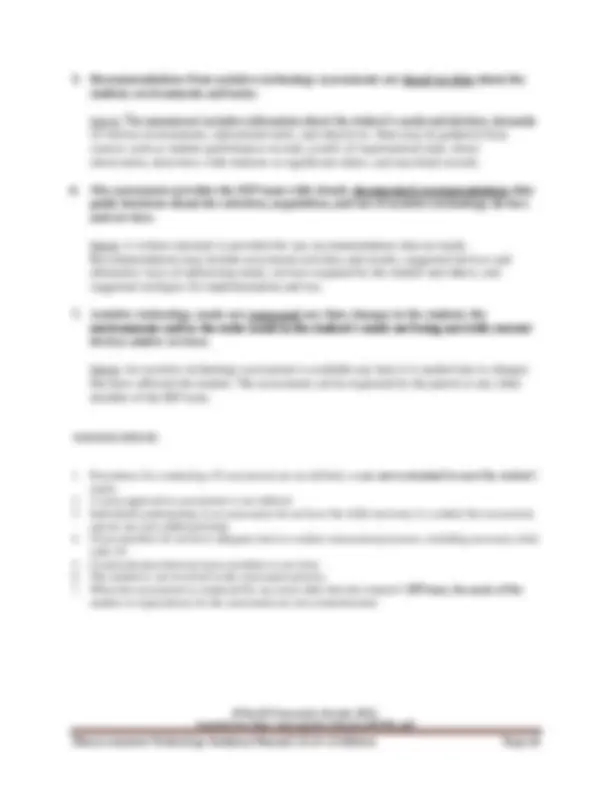
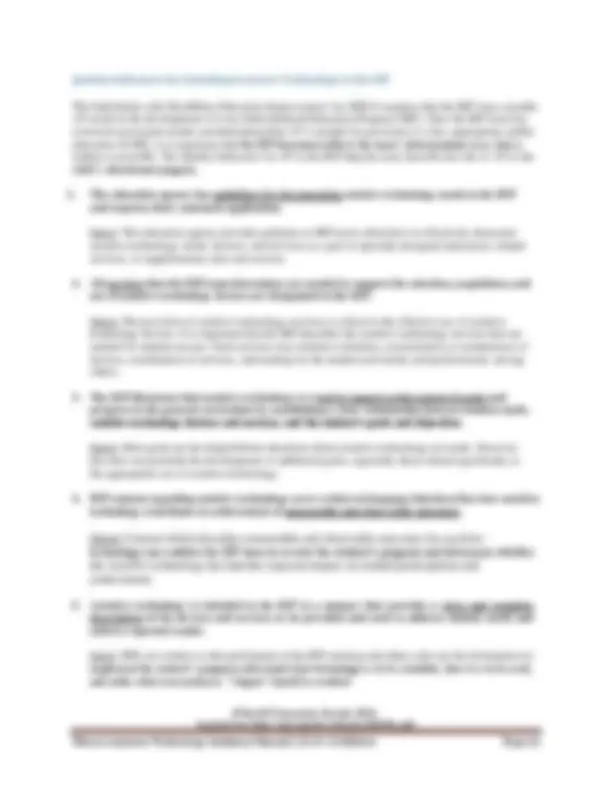

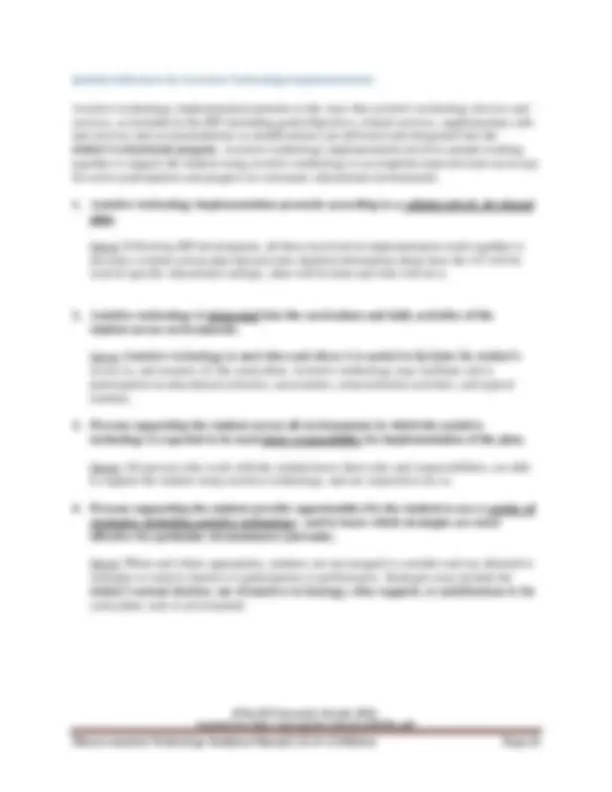
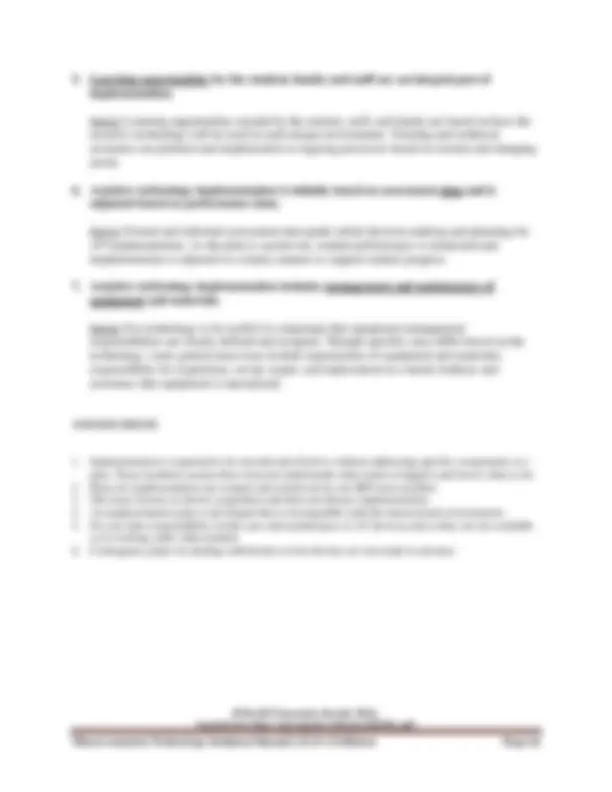
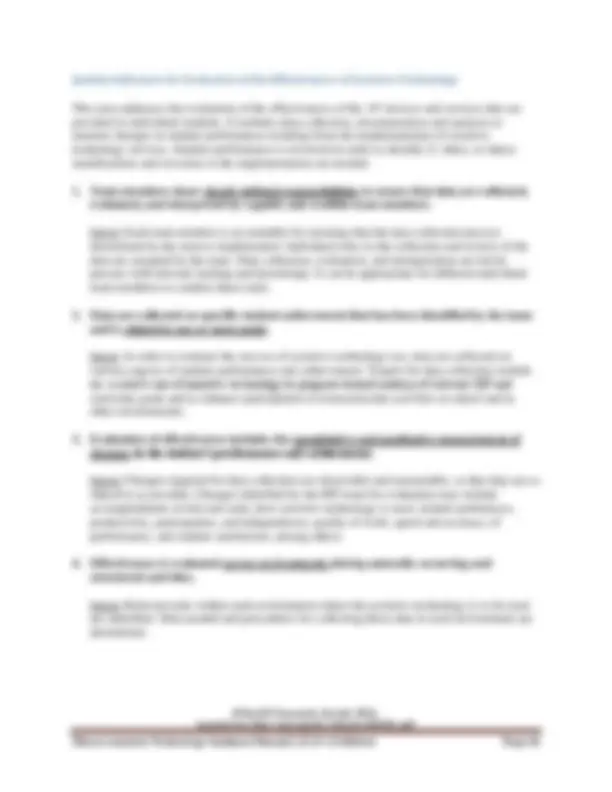
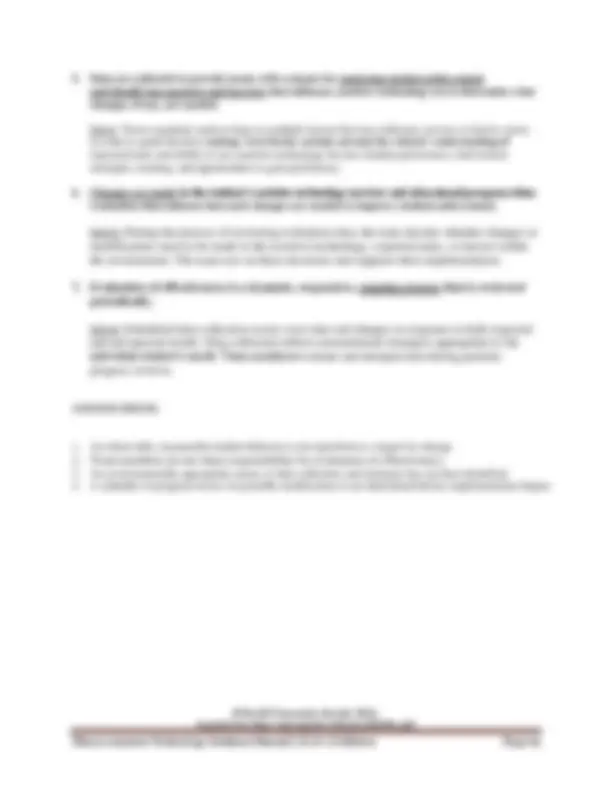
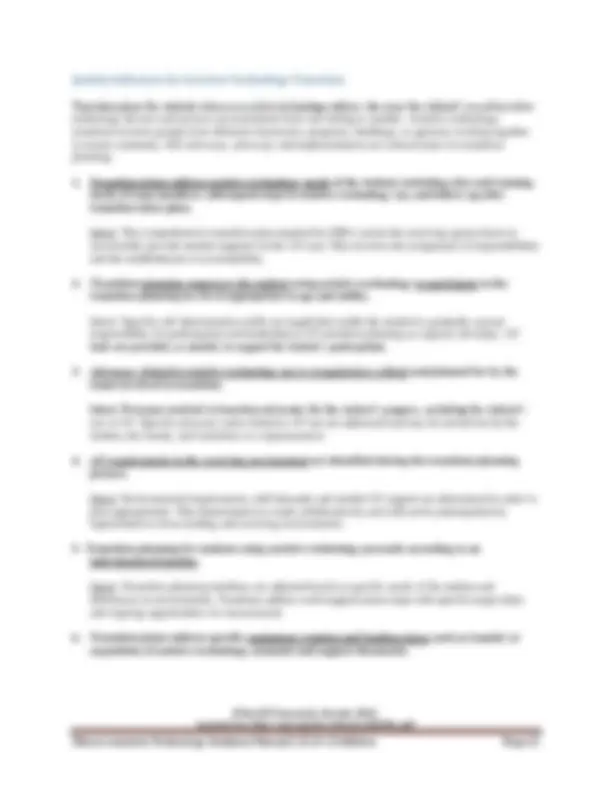
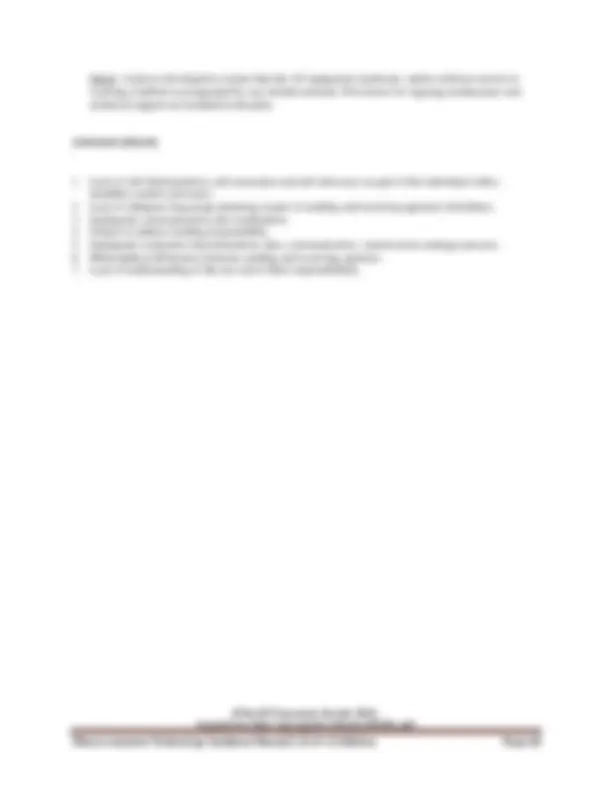
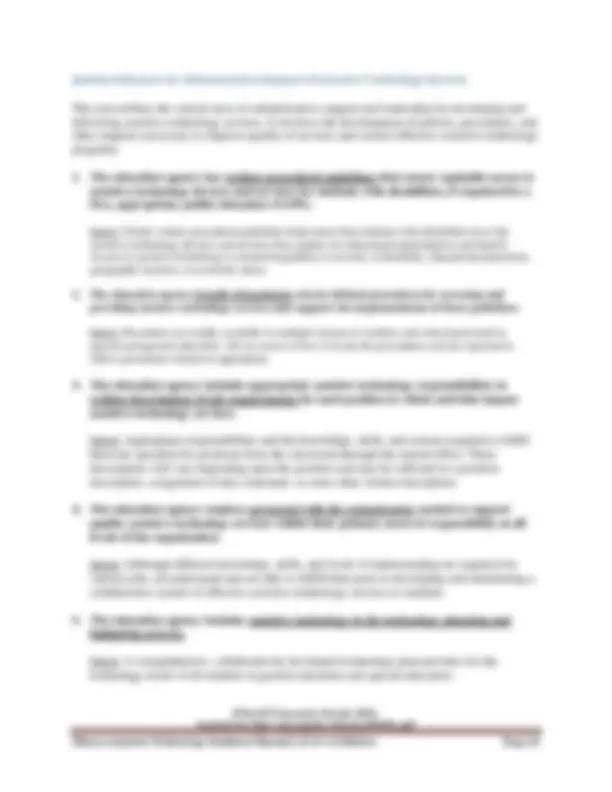
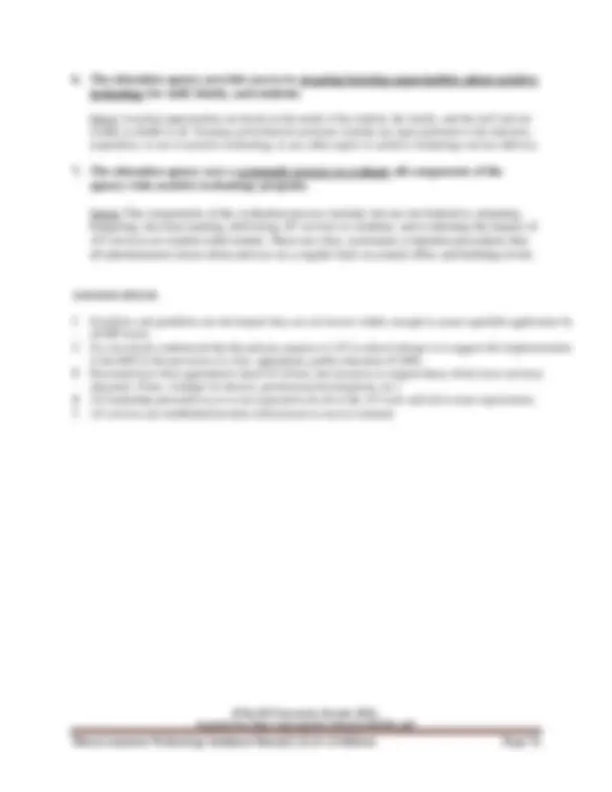
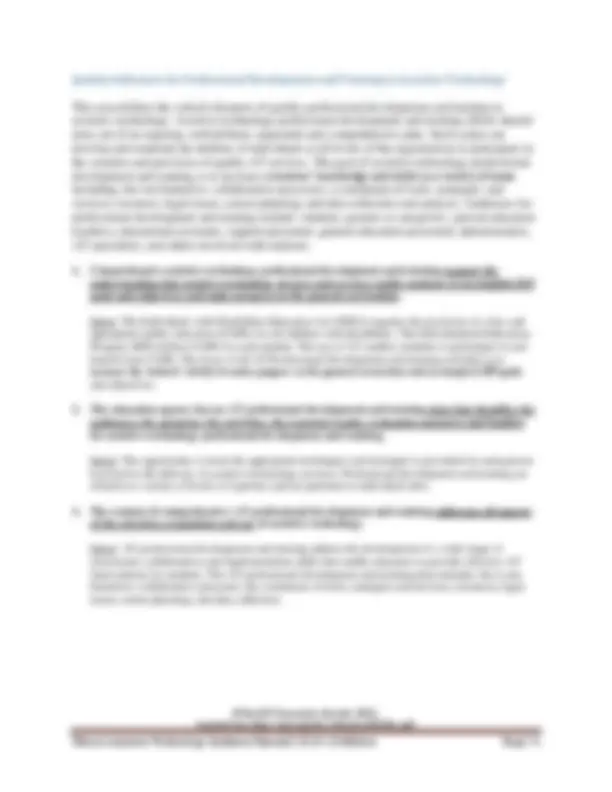
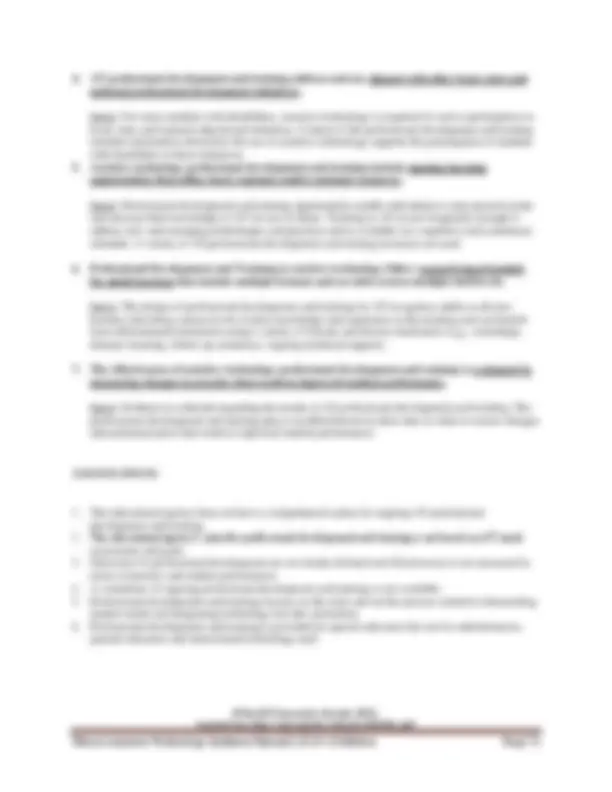
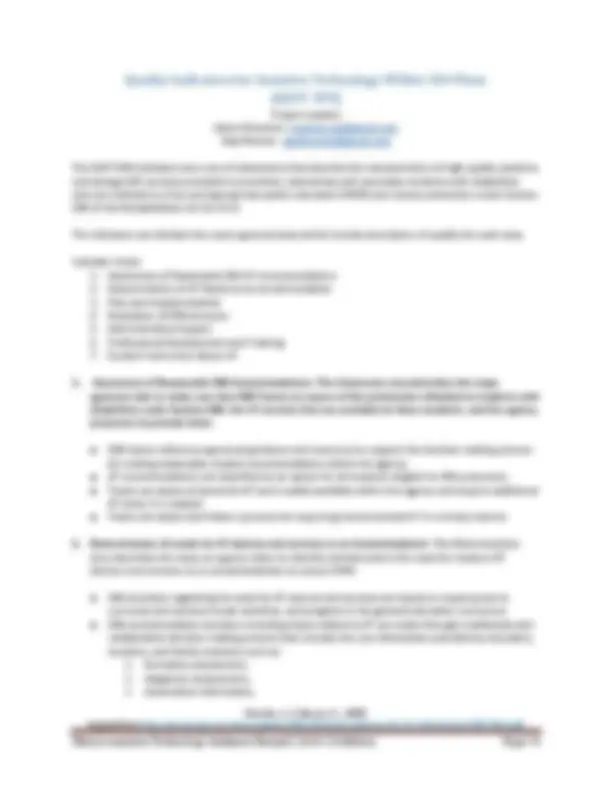
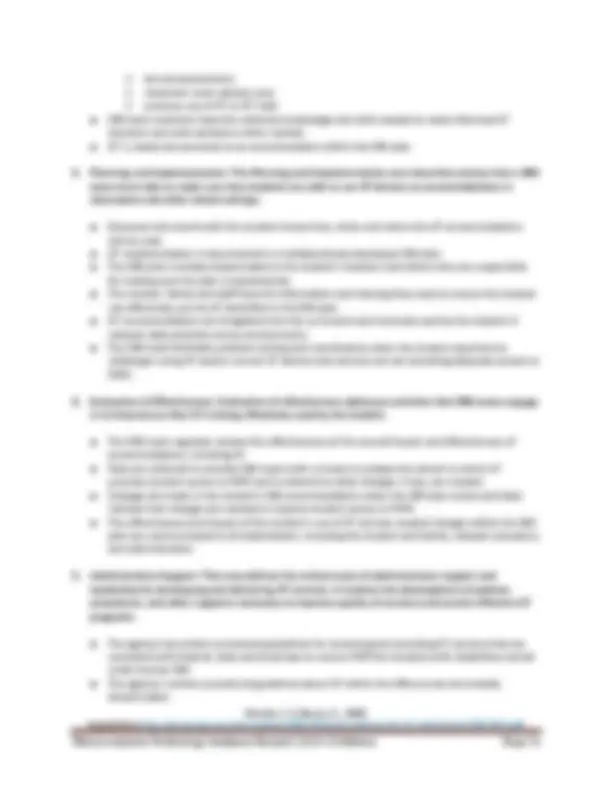
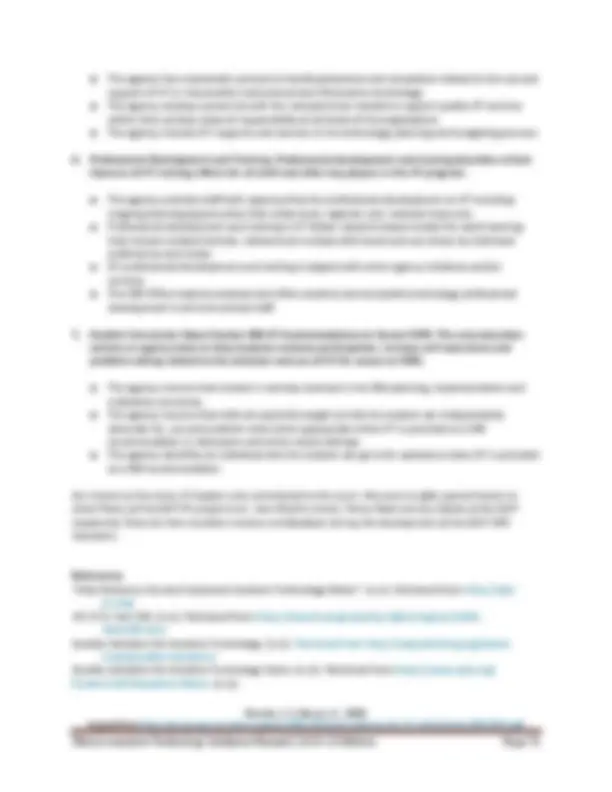
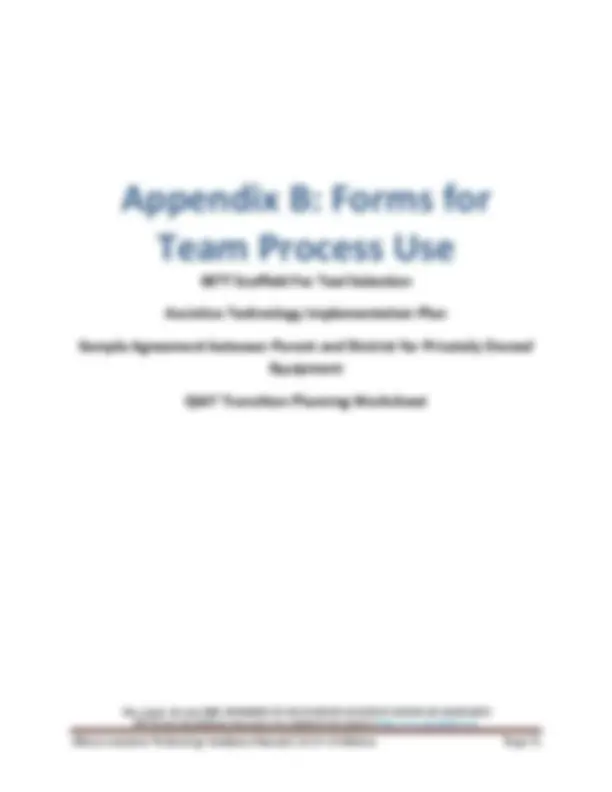
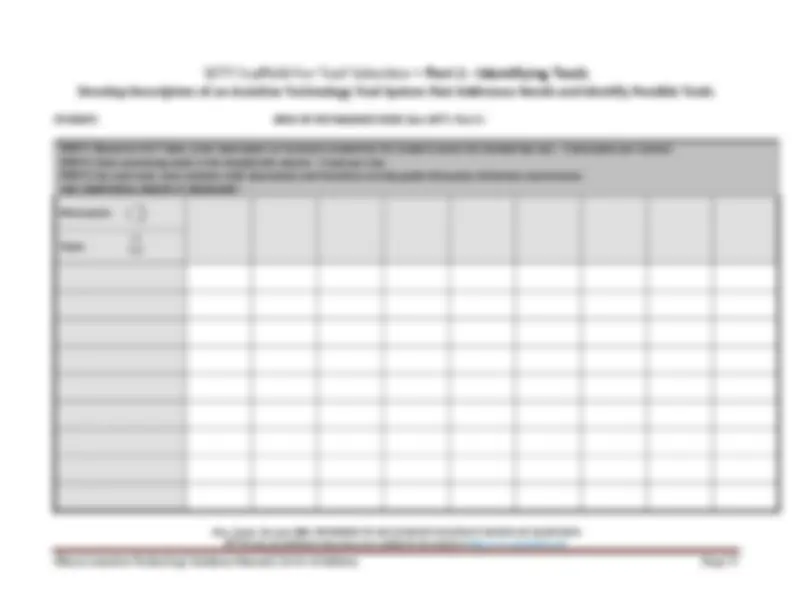
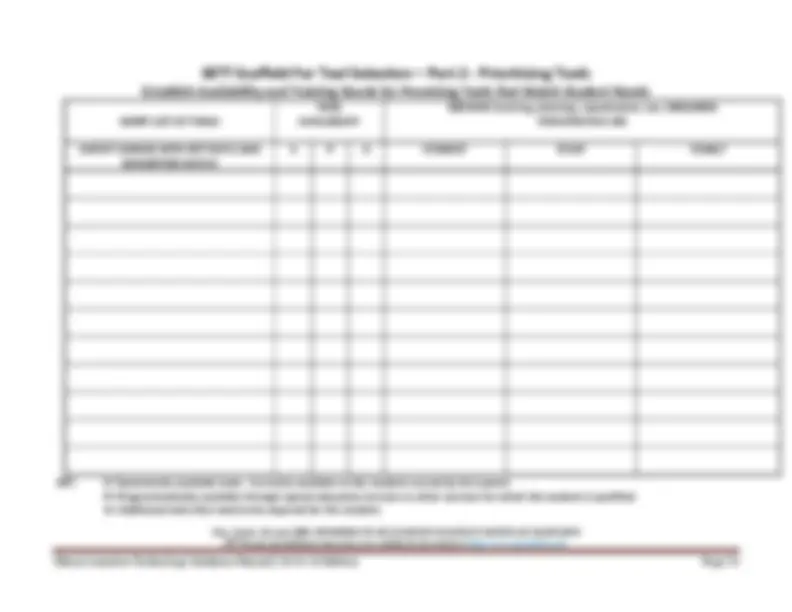
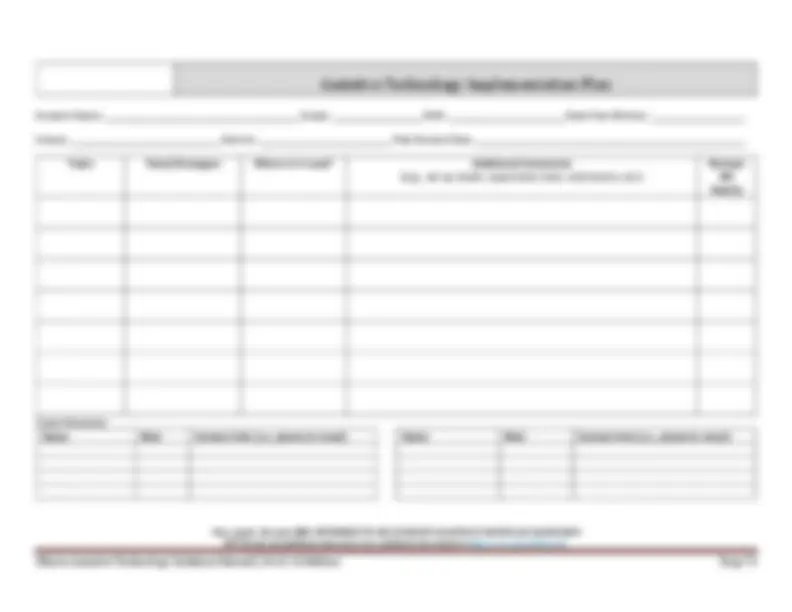
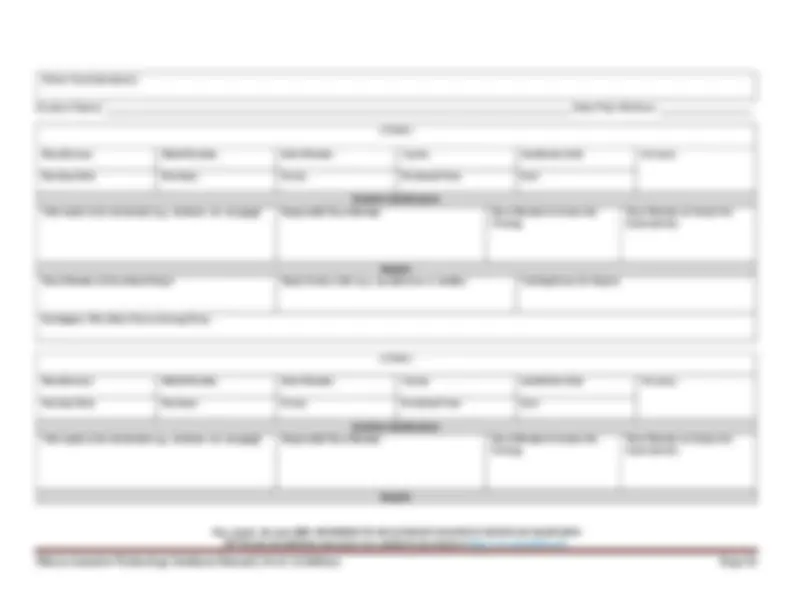
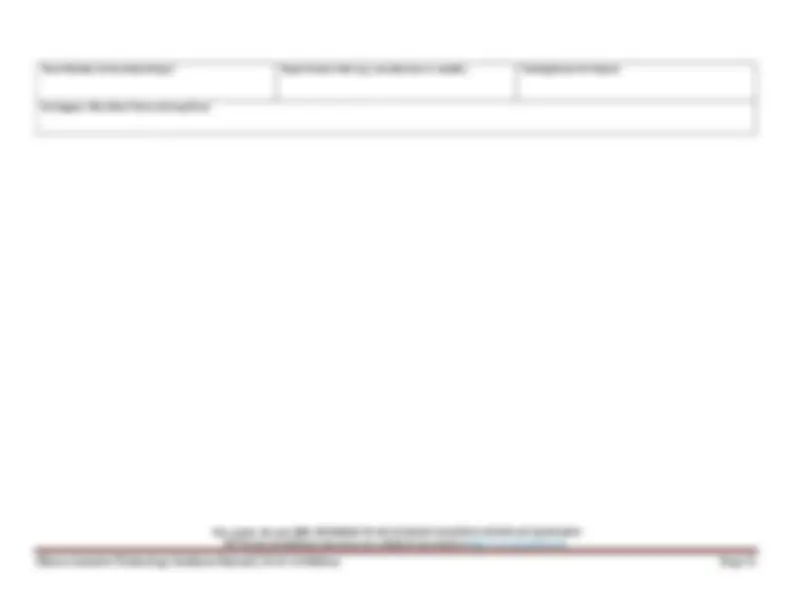


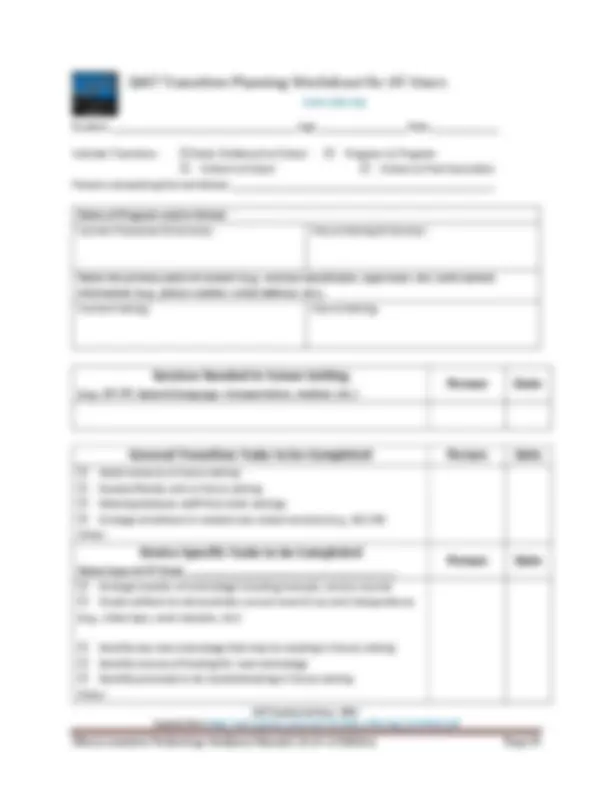
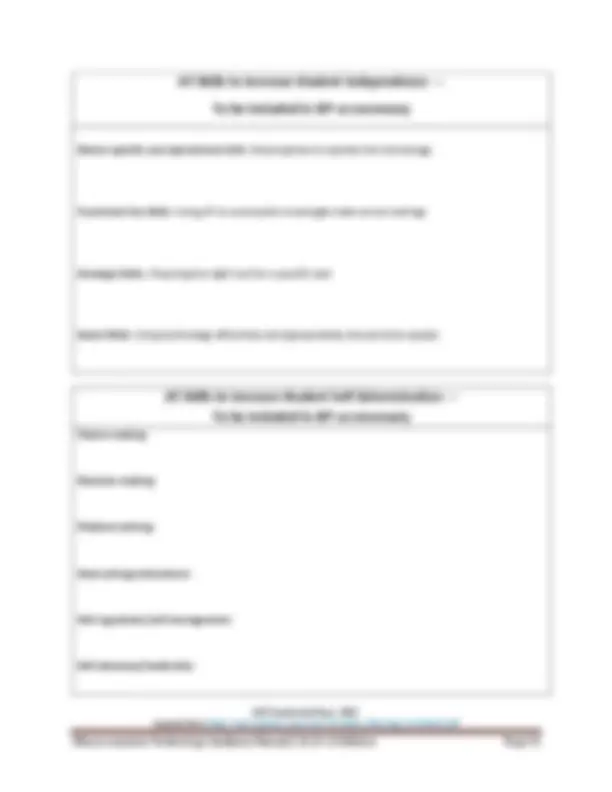
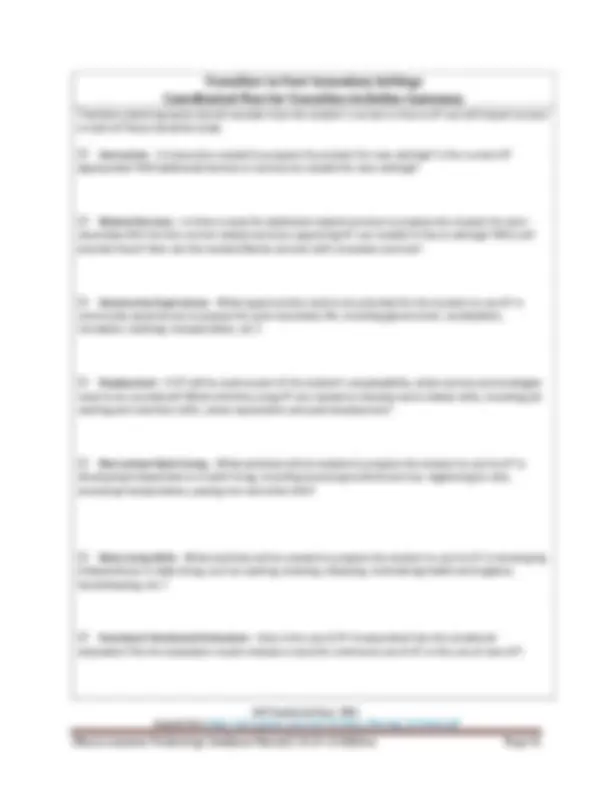
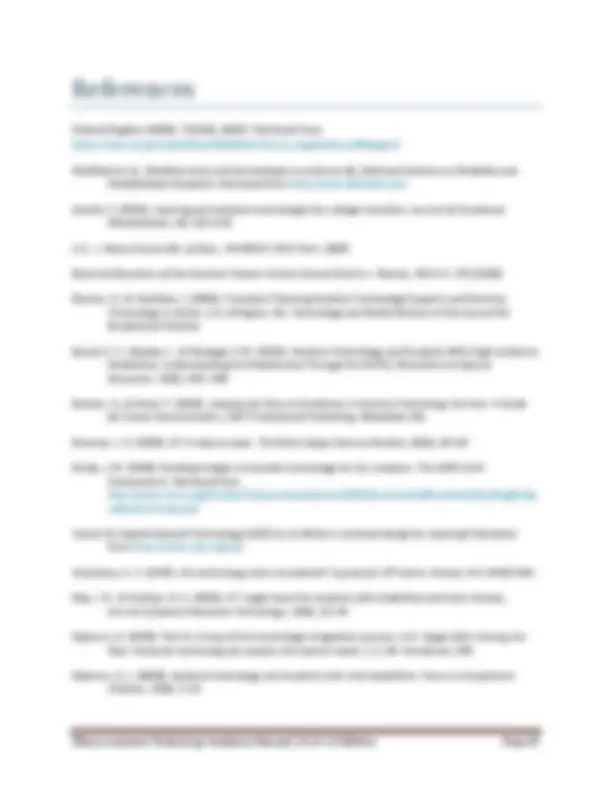
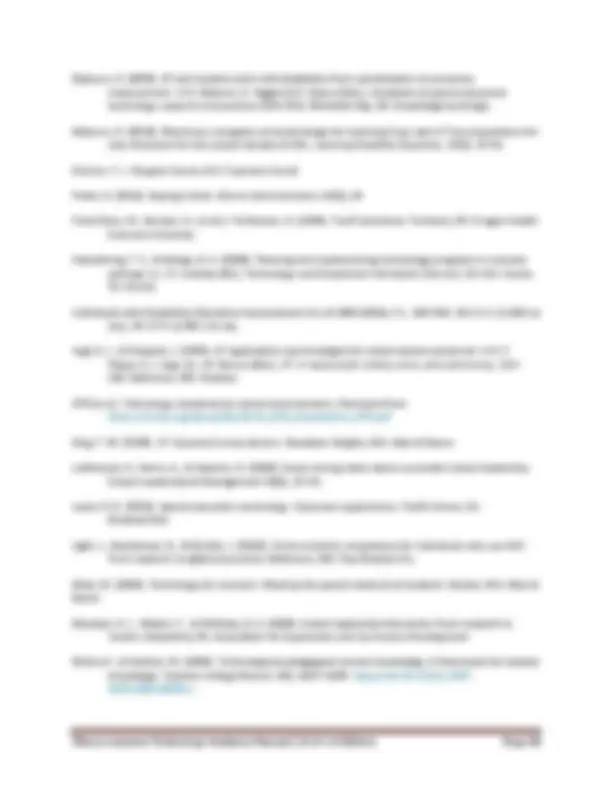
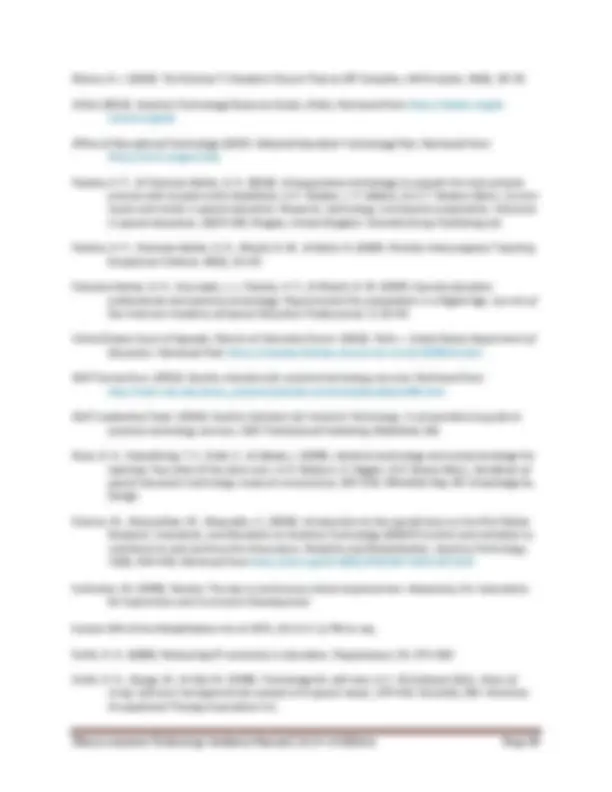
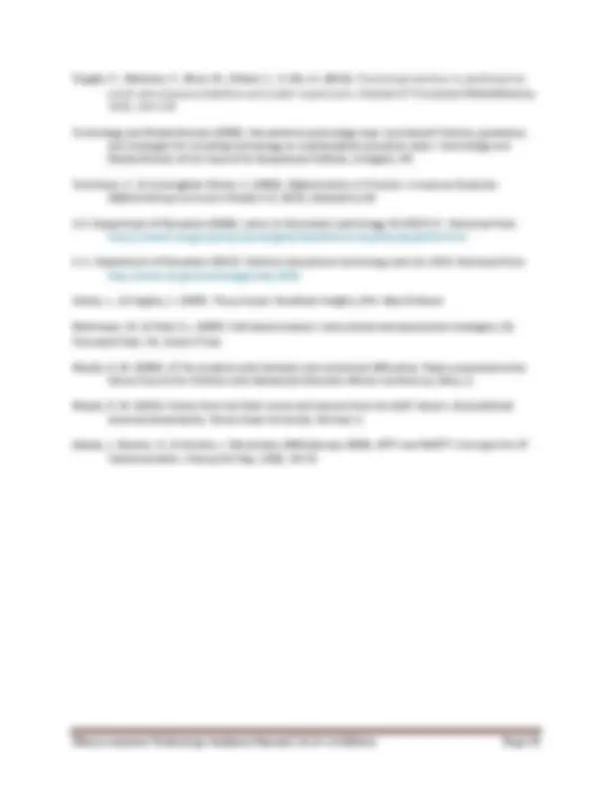


Study with the several resources on Docsity

Earn points by helping other students or get them with a premium plan


Prepare for your exams
Study with the several resources on Docsity

Earn points to download
Earn points by helping other students or get them with a premium plan
Community
Ask the community for help and clear up your study doubts
Discover the best universities in your country according to Docsity users
Free resources
Download our free guides on studying techniques, anxiety management strategies, and thesis advice from Docsity tutors
SETTING THE VISION FOR ASSISTIVE TECHNOLOGY IN SCHOOLS. ... QUALITY INDICATORS FOR ASSISTIVE TECHNOLOGY WITHIN 504 PLANS.
Typology: Lecture notes
1 / 96

This page cannot be seen from the preview
Don't miss anything!

























































































This manual was created in collaboration with Infinitec and made possible through a grant from the Illinois State Board of Education.
WHAT AT AND AT SERVICE COMPONENTS ARE IMPORTANT TO ADDRESS IN TRANSITIONS FROM ONE EDUCATIONAL PLACEMENT TO ANOTHER?
Assistive technology (AT) is a classification of technologies specific to individuals with disabilities. In schools, classifying technology as AT is important. It allows that technology to be documented as part of an Individualized Education Program (IEP), 504 plan or other accommodations for a student with a disability. This section covers basic AT information school teams need to understand, and how it applies in school settings.
The Individuals with Disabilities Education Improvement Act (IDEA) provides a legal definition of AT. The definition at 34 C.F.R. § 300 .5 reads: Assistive technology device means any item, piece of equipment, or product system, whether acquired commercially off the shelf, modified, or customized, that is used to increase, maintain, or improve the functional capabilities of a child with a disability. (Authority: 20 U.S.C. 1401 [ 1 ]) “ Any item” can be interpreted broadly. AT ranges from more complex items such as computer-based technology and software to everyday items like small balls that can be used to modify pencils for alternative grasps. “Product system” refers to the idea that an AT solution often requires multiple technologies working together to benefit a student with a disability. The concept of a product system is analogous to a computer and software. Software alone cannot run without a computer, and a computer is unable to provide much benefit without the software. An example of this concept in application is a student who requires an augmentative or alternative communication (AAC) device mounted to his or her wheelchair, as well as a switch to activate the device. All the technologies must work in concert for the student to benefit from the AT system. “ Whether acquired commercially off the shelf, modified, or customized” means that commonly available technology may be used as AT tools or AT systems purchased and used as AT to increase functional capabilities. Often, however, they need to be adapted to a student’s individual needs. This idea is similar to buying a car. Before driving it, the buyer will most likely adjust the seat positions, mirrors, tilt of the steering wheel and so forth. The buyer may even add a wrap to keep the steering wheel from getting hot in the summer. All those changes make the car better for the driver who bought it. The same is true of AT. Once out of the box, AT may need to be modified or customized for the individual student. Support personnel may need to adjust the device or system programming or alter the way the student physically interacts with it. “ That is used to increase, maintain, or improve the functional capabilities of a child with a disability” relates to the reason the AT tool or system is provided to the student. Functional capabilities are the
skills and activities students must perform effectively to succeed in school. Among them are eating, drinking, toileting, seeing, hearing, communicating, reading, writing, paying attention and getting to and around school. The paragraph of IDEA that defines AT also limits its definition with this statement: The term [assistive technology] does not include a medical device that is surgically implanted, or the replacement of such device. (Authority: 20 U.S.C. 1401 ( 1 )) In effect, AT considered for students with disabilities in school settings should not include items inserted below the skin by a medical doctor. A cochlear implant, for example, would not be considered AT.
The goal of AT is to enhance students’ performance on specific tasks (Edyburn, 2005) or to allow students to maintain performance levels that allow them to succeed in their instructional programs. Lewis (1993) noted that AT can:
Two primary types of interventions are used in school settings. Instructional interventions are procedures or strategies educators use to teach academic or social skills. Instructional interventions help students learn new skills. Compensatory interventions are procedures, tools and strategies that allow students to perform better on a task without necessarily improving the underlying skills associated with it. AT provides a compensatory benefit to a student with a disability, according to Edyburn (2000), Lewis (1993), Parette, Peterson-Karlan, Wojcik and Bardi (2007), and Wojcik (2005). All proposed that AT is any tool (or system of tools) allowing a person to complete a task at an expected performance level when that would not otherwise be possible. In short, AT helps students show what they know and compensate for a barrier posed by their disability.
No categories of assistive technologies are defined in legislation; however, the AT field has developed a number of taxonomies to help classify assistive technologies. The AbleData ( http://www.abledata.com) database resource sponsored by the National Institute on Disability and Rehabilitation Research has developed 20 different categories to classify AT by function.
For some students, however, a Chromebook may be classified as AT. For instance, a Chromebook may offer students with reading and writing disabilities alternative ways to encode and decode printed text. Enlarged text, text-to-speech, different contrasts and alternative readability levels are all available. A Chromebook can even produce printed text through speech recognition. Having access to such technologies provides a compensatory benefit, minimizing the impact of a learning disability. A Chromebook can allow a student to perform tasks in ways he or she could not otherwise. The fact that the Chromebook and associated applications provide such compensatory benefits for an individual student would support the designation of AT for that student and should be documented in the student’s IEP. Any student, with or without disabilities, may use readily available technologies that have accessibility features such as text enlargement or text to speech. These technologies are identified as AT for a student with a disability if they are used as a compensatory intervention and an IEP team determines that a student needs them to receive FAPE. Additional AT may be needed to help a student with disabilities access readily available technologies used by all students. Once such a need is determined, it must be documented in the student’s IEP.
Assistive technology service means any service that directly assists a child with a disability in the selection, acquisition, and use of an assistive technology device. The term includes— (a) The evaluation of the needs of a child with a disability, including a functional evaluation of the child in the child’s customary environment; (b) Purchasing, leasing, or otherwise providing for the acquisition of assistive technology devices by children with disabilities; (c) Selecting, designing, fitting, customizing, adapting, applying, retaining, repairing, or replacing assistive technology devices; (d) Coordinating and using other therapies, interventions, or services with assistive technology devices, such as those associated with existing education and rehabilitation plans and programs; (e) Training or technical assistance for a child with a disability or, if appropriate, that child’s family; and (f) Training or technical assistance for professionals (including individuals providing education or rehabilitation services), employers, or other individuals who provide services to, employ, or are otherwise substantially involved in the major life functions of that child. (Authority: 20 U.S.C. 1401(2)) Summary AT service delivery involves more than simply providing AT. It is a process , recorded in a student’s IEP, by which AT is considered, selected, provided, supported and periodically evaluated to determine its effectiveness for a student.
(b) Exception; services that apply to children with surgically implanted devices, including cochlear implants. (1) Related services do not include a medical device that is surgically implanted, the optimization of that device’s functioning (e.g., mapping), maintenance of that device, or the replacement of that device. § 300.42 Supplementary aids and services. Supplementary aids and services means aids, services, and other supports that are provided in regular education classes, other education-related settings, and in extracurricular and nonacademic settings, to enable children with disabilities to be educated with nondisabled children to the maximum extent appropriate in accordance with §§ 300.114 through 300.116. For a more complete IDEA definitions with additional explanations, visit the IDEA Website, https://sites.ed.gov/idea/regs/b/b.
AT and AT services may be provided as part of special education to a student if the IEP team deems it necessary and develops related goals within the IEP. In this context, specially designed instruction may be provided to help a student understand how to use AT. For example, a special education teacher may provide instruction on how to use speech recognition effectively when composing print. The instructional goals would define key performance outcomes in using speech recognition for writing. Alternatively, AT may be provided along with specially designed instruction to meet a student’s individual needs and to ensure free appropriate public education (FAPE). As an example, a student may use speech recognition while receiving instruction on specific writing strategies. Using speech recognition helps the student generate printed text. This AT compensates for the impact of a disability that affects how the student applies the writing strategy being taught through individualized and specially designed instruction. The IEP team would generate goals for using specific writing strategies and may identify goals for learning how to use speech recognition. AT and AT services also may be provided as part of a related service. For example, a student who has difficulty communicating may receive AT services to learn to use an alternative and augmentative communication (AAC) system from a Speech-Language Pathologist (SLP). Finally, AT and AT services may be provided as a supplementary aid or service. In this scenario, AT and AT services are provided in regular education classes and other education-related settings, as well as in extracurricular and nonacademic school settings. The intent is to enable students with disabilities to be educated with nondisabled students to the maximum extent appropriate. For example, a slant board may be provided as AT to help a student with motor difficulties more effectively engage in handwriting in a general education classroom. The general education teacher may provide AT services to ensure that the slant board is available when the student needs to use it. The teacher also may help the student set up the slant board so that it may be used effectively.
IDEA requires that students who are aged 3 – 21 and receiving special education services be guaranteed free appropriate public education (FAPE). According to IDEA 2004 (34 C.F.R. § 300.17): Free appropriate public education or FAPE means special education and related services that— (a) Are provided at public expense, under public supervision and direction, and without charge; (b) Meet the standards of the SEA, including the requirements of this part; (c) Include an appropriate preschool, elementary school, or secondary school education in the State involved; and (d) Are provided in conformity with an individualized education program (IEP) that meets the requirements of §§ 300.320 through 300.324. (Authority: 20 U.S.C. 1401(9)) Providing AT may serve as an element of a school’s obligation to provide FAPE to students. The “ free” in FAPE means that all special education and related services (including necessary AT tools and services) should be provided to students with disabilities at no cost to the parents. This rule prohibits schools from refusing to provide AT or AT services in a student’s IEP because of expense. The only time schools may consider cost of AT in making a consideration determination is when two equally effective alternatives cost different amounts. The “ appropriate” portion of FAPE refers to the degree of impact the equipment and services provided may have on students’ progress in school settings. In the landmark case of Board of Education v. Rowley , the Supreme Court established a two-pronged test (458 U.S. 176 (1982)) that an appropriate education:
much as appropriate. Local Education Agencies are responsible for developing ways to measure how well students perform with AT. Parents are to be notified in writing about their child’s requirement for AT at the first and each annual IEP meeting.
IDEA and Illinois statutes mention additional legal and educational mandates that may influence whether a team decides to provide assistive technology for a student. It is important to understand how the provision of assistive technology devices and services relates to each of the following mandates.
The Illinois Learning Standards provide guidance about the content students are expected to learn. The standards shape the development of curricula and associated experiences. AT provides a means for individual students with disabilities to access and engage in curricula when they could not otherwise perform the curricular tasks.
IDEA requires school systems to ensure that textbooks and related printed materials are provided in specialized formats to students with print disabilities in a timely manner (34 C.F.R. § 300.172). The Illinois State Board of Education has provided guidance on this matter, which can be referenced at https://www.isbe.net/Pages/Special-Education-NIMAS-NIMAC-Information.aspx. While students with print-related disabilities may be provided with specialized formats (e.g., Braille, electronic text, enlarged text or audio), students may need to use AT tools in conjunction with these specialized formats to effectively access the materials. For example, if a textbook were provided as electronic text, a student may still need to use a text-to-speech program or a refreshable braille display to access the digital textbook file. In this instance, it would be insufficient to provide only the electronic text.
1. The design and composition of an environment so that it may be accessed, understood and used 1. To the greatest possible extent 2. In the most independent and natural manner possible 3. In the widest possible range of situations 4. Without the need for adaptation, modification, assistive devices or specialised solutions, by any persons of any age or size or having any particular physical, sensory, mental health or intellectual ability or disability, _and
Multi-Tiered Systems of Support (MTSS) is a general education initiative with the goal of increasing individual students’ rates of progress in school settings. Students receiving services within an MTSS framework may use AT tools at any tier to gain access to core instruction, and to receive evidence-based interventions matched to their needs. If, however, using AT tools significantly alters how an intervention is implemented, the effectiveness and fidelity of the intervention may be altered as well. Take the example of a student receiving an intervention to improve oral reading fluency. The use of a text-to-speech program that reads text passages for the student may reduce the overall effectiveness and fidelity of the intervention. In this case, the school team should determine whether the student will use the AT device while receiving the intervention. This does not mean that school teams should avoid using AT tools to allow students with disabilities on curricular tasks. Interventions and supports provided in the context of an MTSS framework can and should be used along with AT tools to increase students’ successes.
Section 504 of the Rehabilitation Act of 1973 is a U.S. civil rights statute prohibiting agencies and programs that receive federal funds from discriminating against individuals with disabilities. Because public schools receive federal funds, they are subject to the provisions of Section 504. The law states: No otherwise qualified individual with handicaps in the United States ... shall, solely by reason of his handicap, be excluded from participation in, be denied the benefit of, or be subject to discrimination under any program or activity receiving Federal financial assistance. (34 C.F.R. §104.4(a)) Note that the definition of disability is different under Section 504 than it is in IDEA. Section 504 defines an “individual with handicaps” as a person who: (i) has a physical or mental impairment which substantially limits one or more major life activities, (ii) has a record of such an impairment, or (iii) is regarded as having such an impairment. (34 C.F.R. §104.3(j)(1)) Among “major life activities” are walking, sleeping, seeing, hearing, learning, caring for oneself, performing manual tasks, speaking, breathing and working. Thus, the definition of “individuals with handicaps” under Section 504 is broader than the definition of children with disabilities under the IDEA. Some children who are not eligible for special education services may be able to receive them under the protections of Section 504. For example, some students who have a physical disability, are able to benefit from the curriculum provided to students in general education classes. For these students, AT my be provided to help them write or read the same material other students use. They do not need specially designed instruction, but do need AT to have access to their educational program. Section 504 applies to preschool, elementary and secondary schools that receive or benefit from federal financial assistance. These programs are required to provide a free appropriate public education to
students with disabilities. Section 504 defines “appropriate” as providing regular or special education, and related aids and services, designed to meet the individual educational needs of persons with disabilities as adequately as the needs of persons without disabilities. Programs subject to Section 504 must ensure that students with disabilities are afforded an equal opportunity to participate in all academic and extracurricular school programs. Benefits and services provided to students with disabilities must be equal to, and as effective as, the benefits and services afforded to other students. Schools may have to make special accommodations, such as providing AT devices and/or services, so that students with disabilities can access the full range of programs and activities. The key here is the equal opportunity to participate required under Section 504. More information about Section 504 and AT is available from: Chicago Office U.S. Department of Education John C. Kluczynski Federal Building 230 S. Dearborn Street, 37th Floor Chicago, IL 60604 Telephone: (312) 730- 1560 Facsimile: (312) 730- 1576 Email: OCR.Chicago@ed.gov How can an IEP team judge its Section 504 processes for including AT? A list of 10 quality indicators for AT devices and services, as applied to students served under Section 504 , is available in Appendix A and at https://www.natenetwork.org/forms-and-tools. These indicators can serve as overarching guidelines for quality AT services required outside the special education process. They are used to help schools and districts develop systems ensuring that students with disabilities who do not qualify for specially designed instruction have full access to the general education curriculum and other school-related activities. Summary State and federal mandates speak to a variety of educational tools and approaches. These mandates may shape the decision to use AT. It is important that educators and parents understand how each of these requirements is related to an educational agency’s responsibility to provide AT.